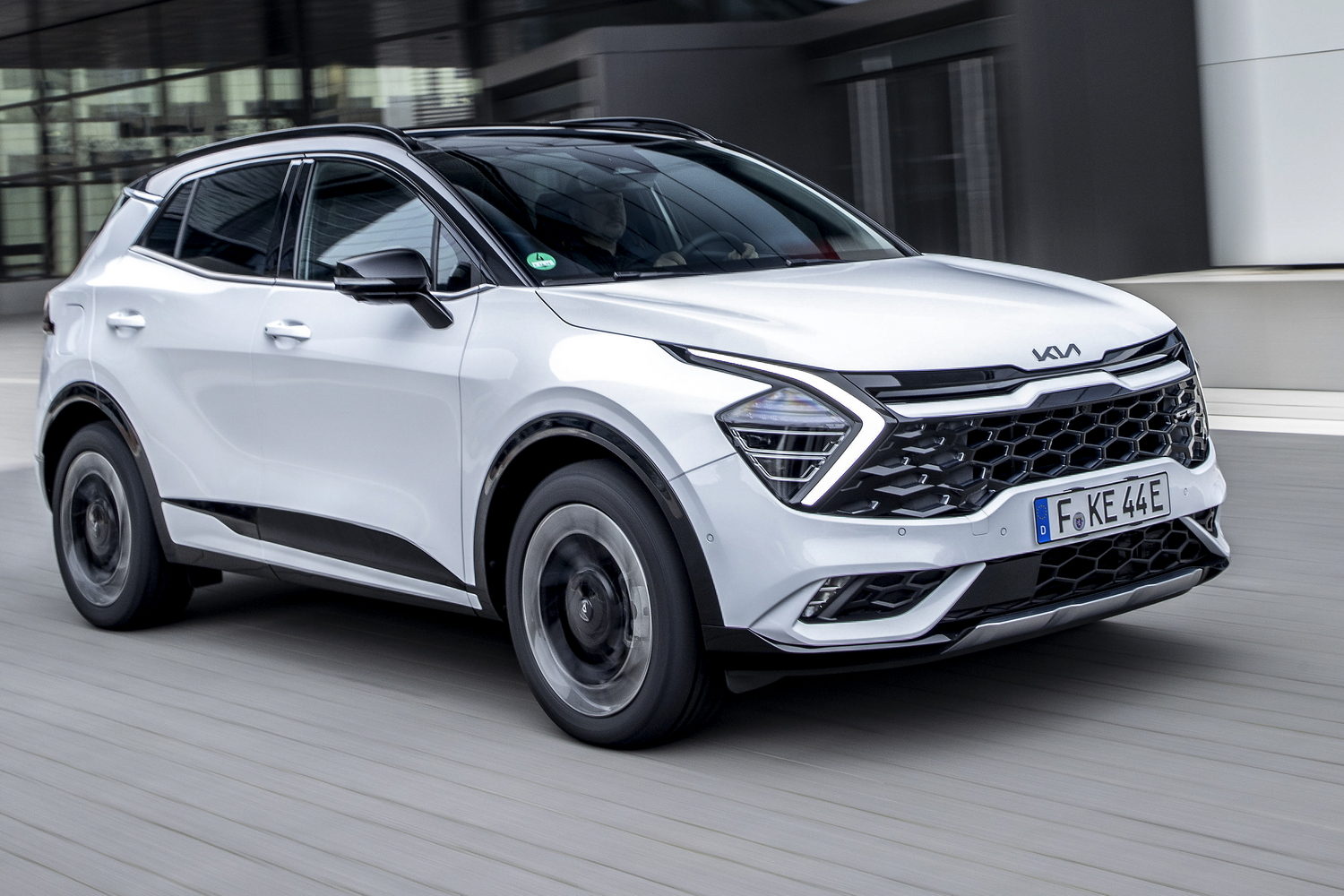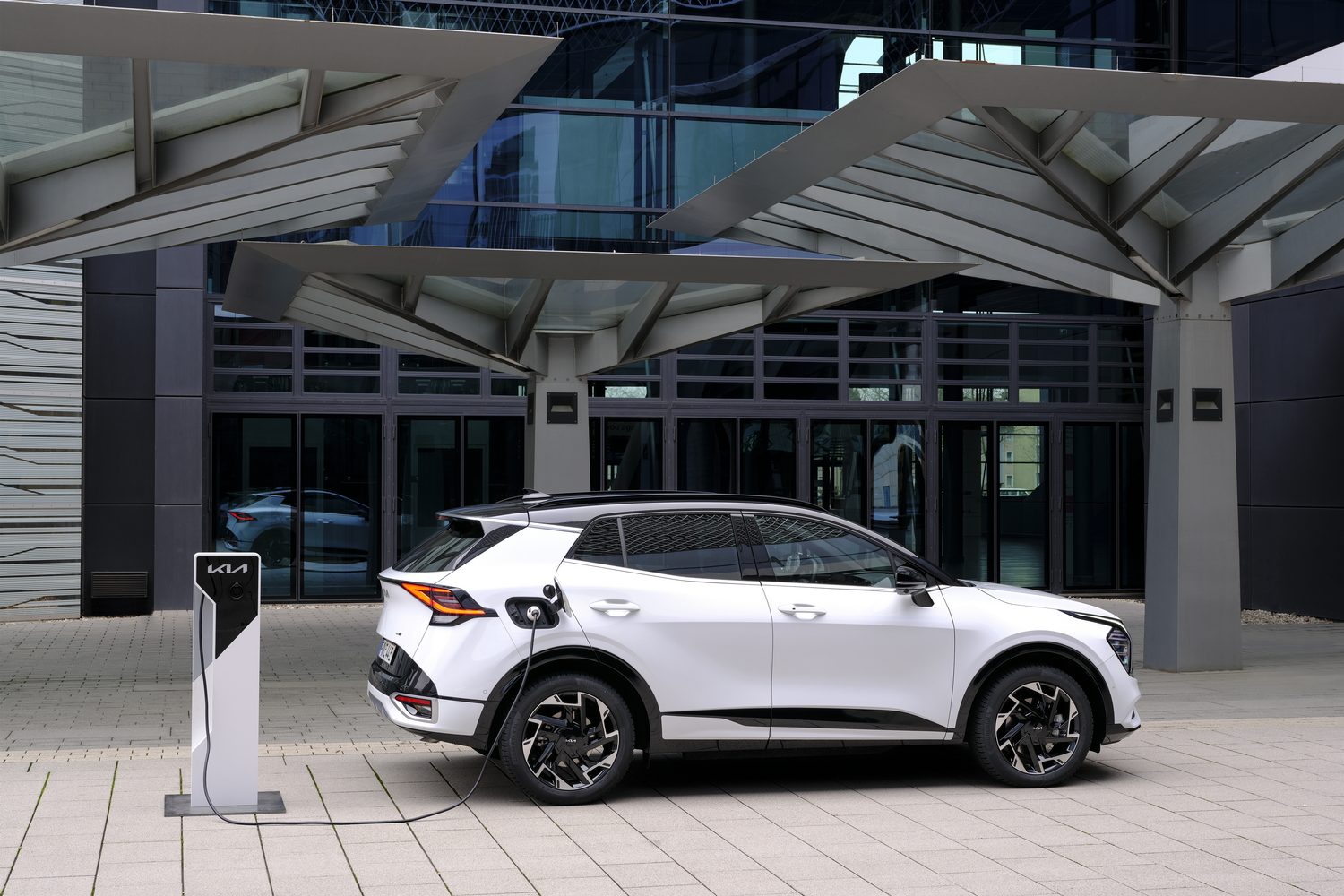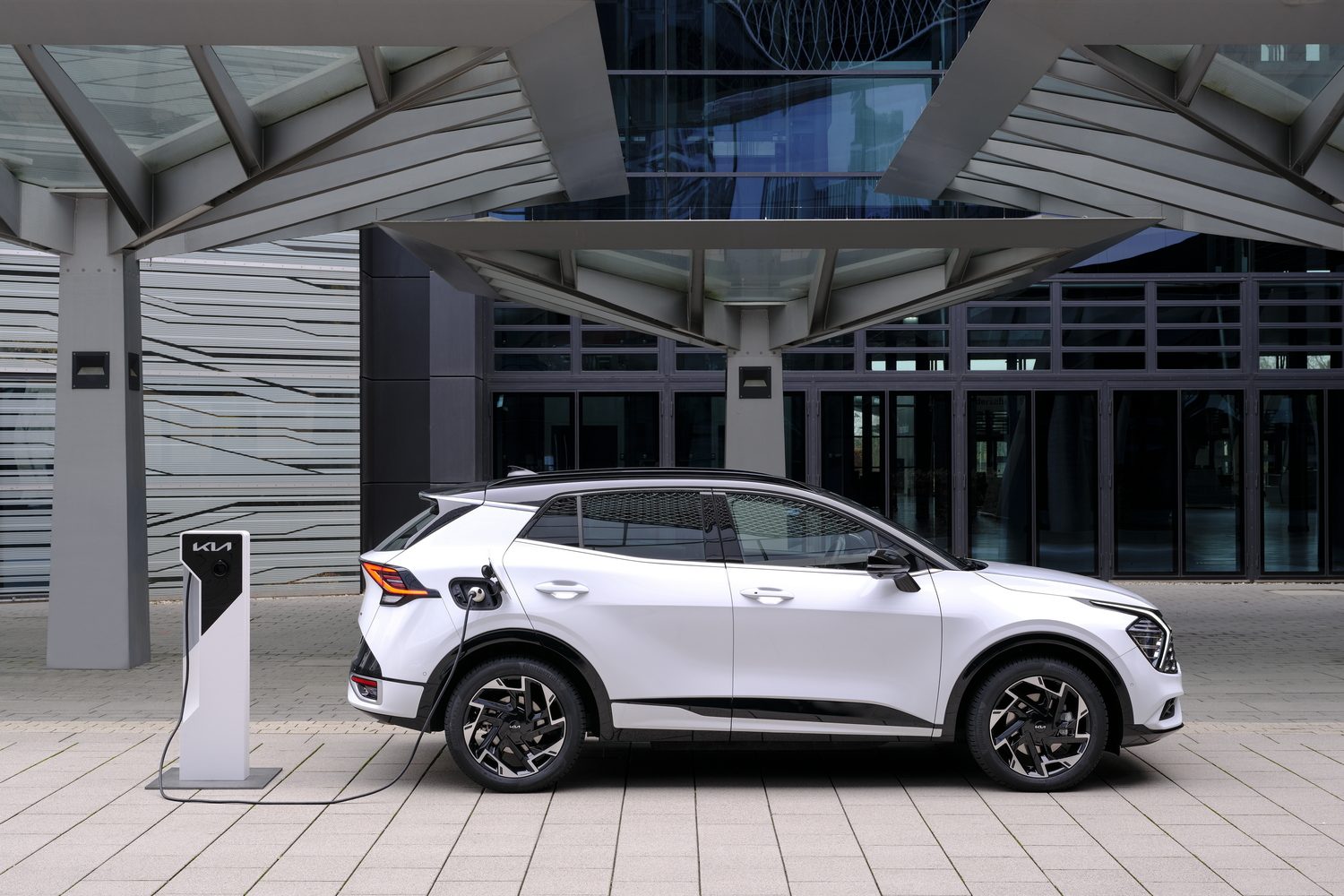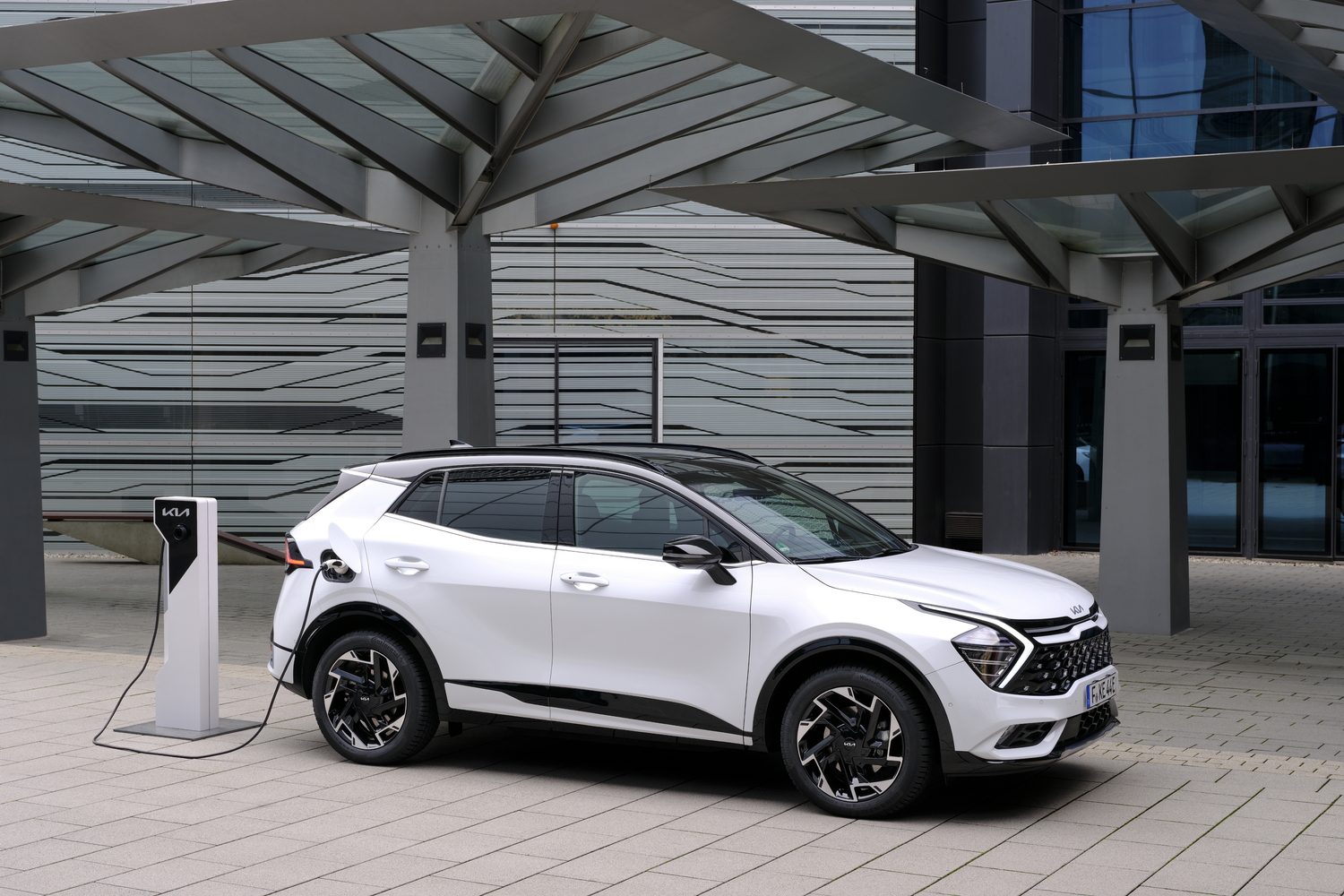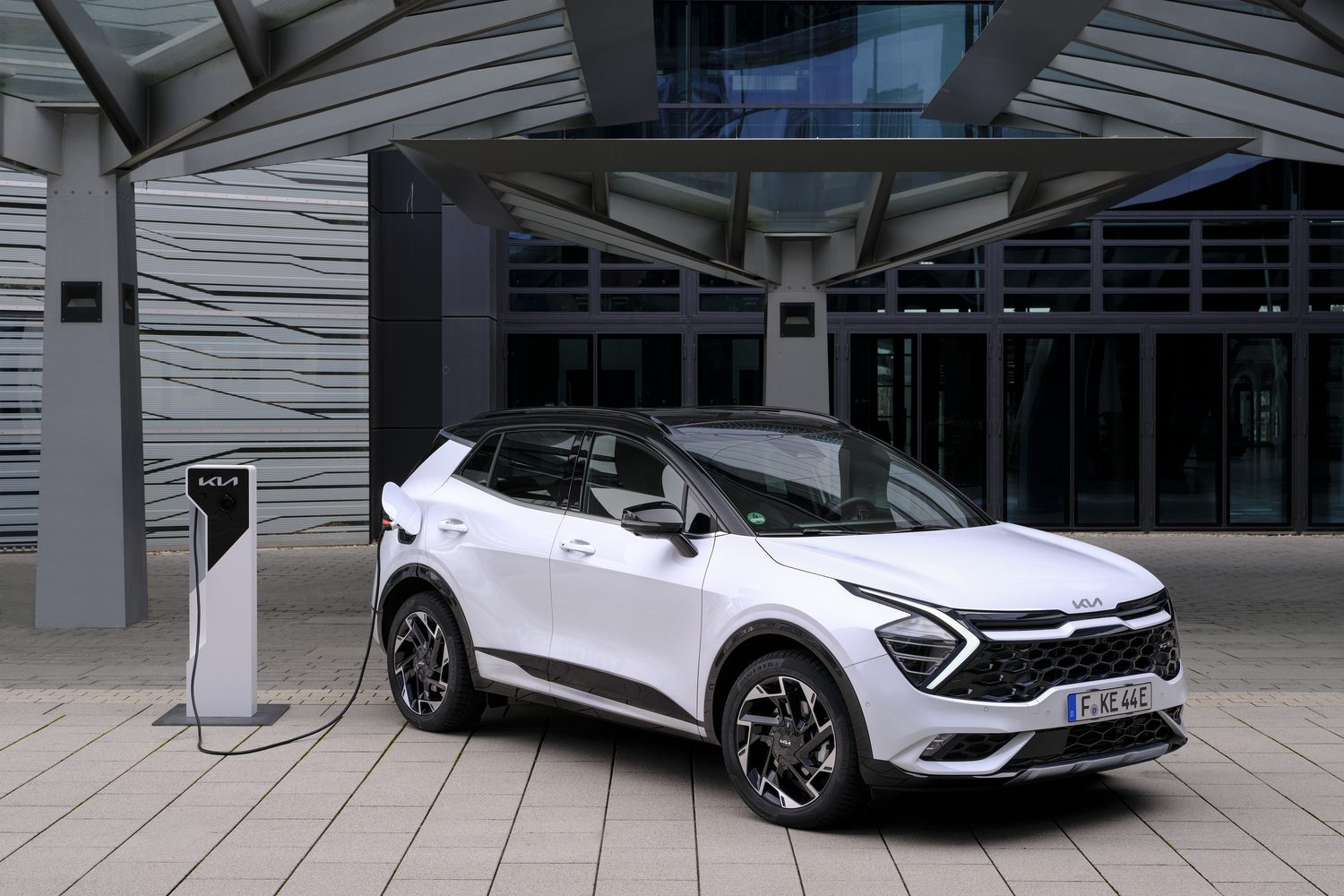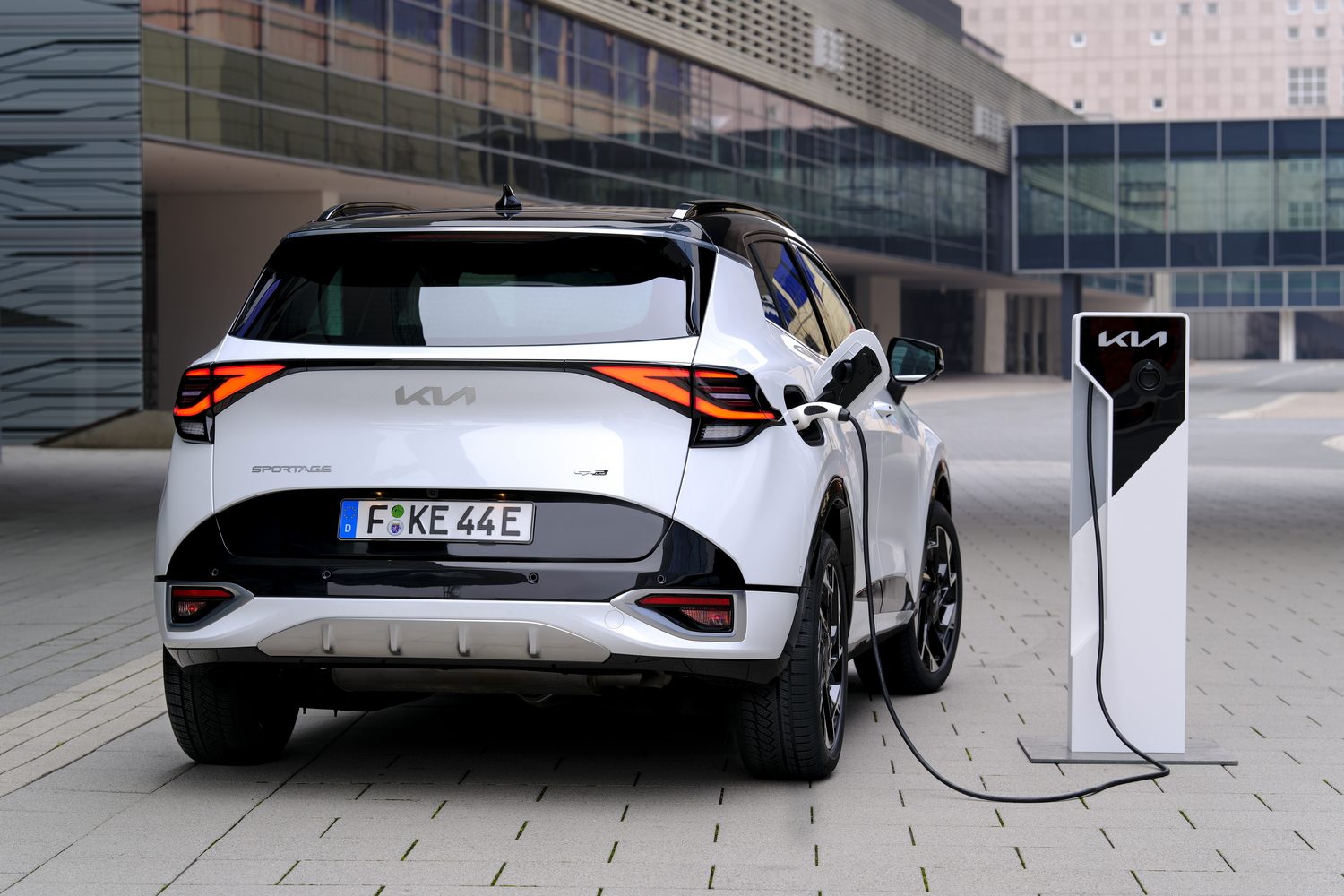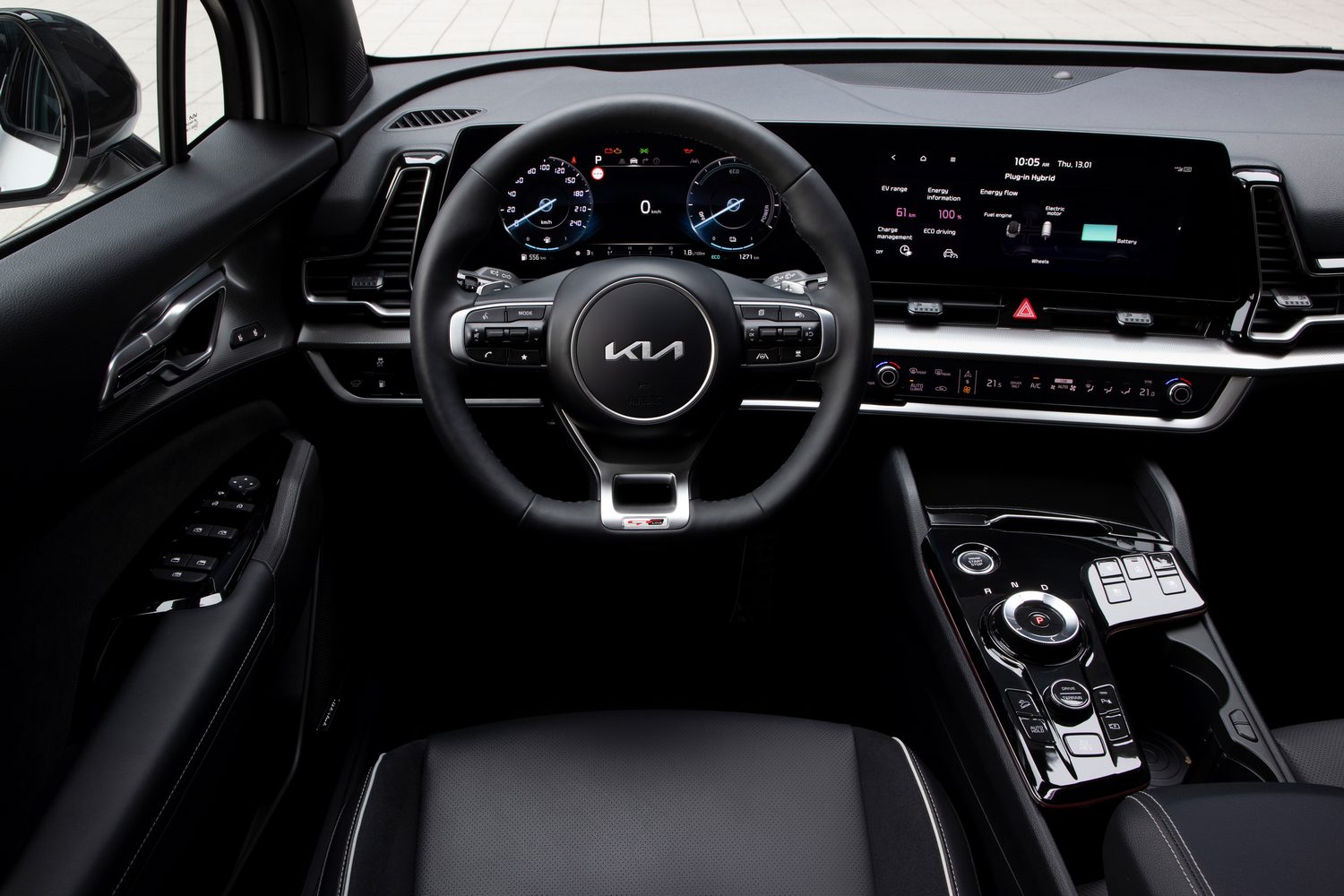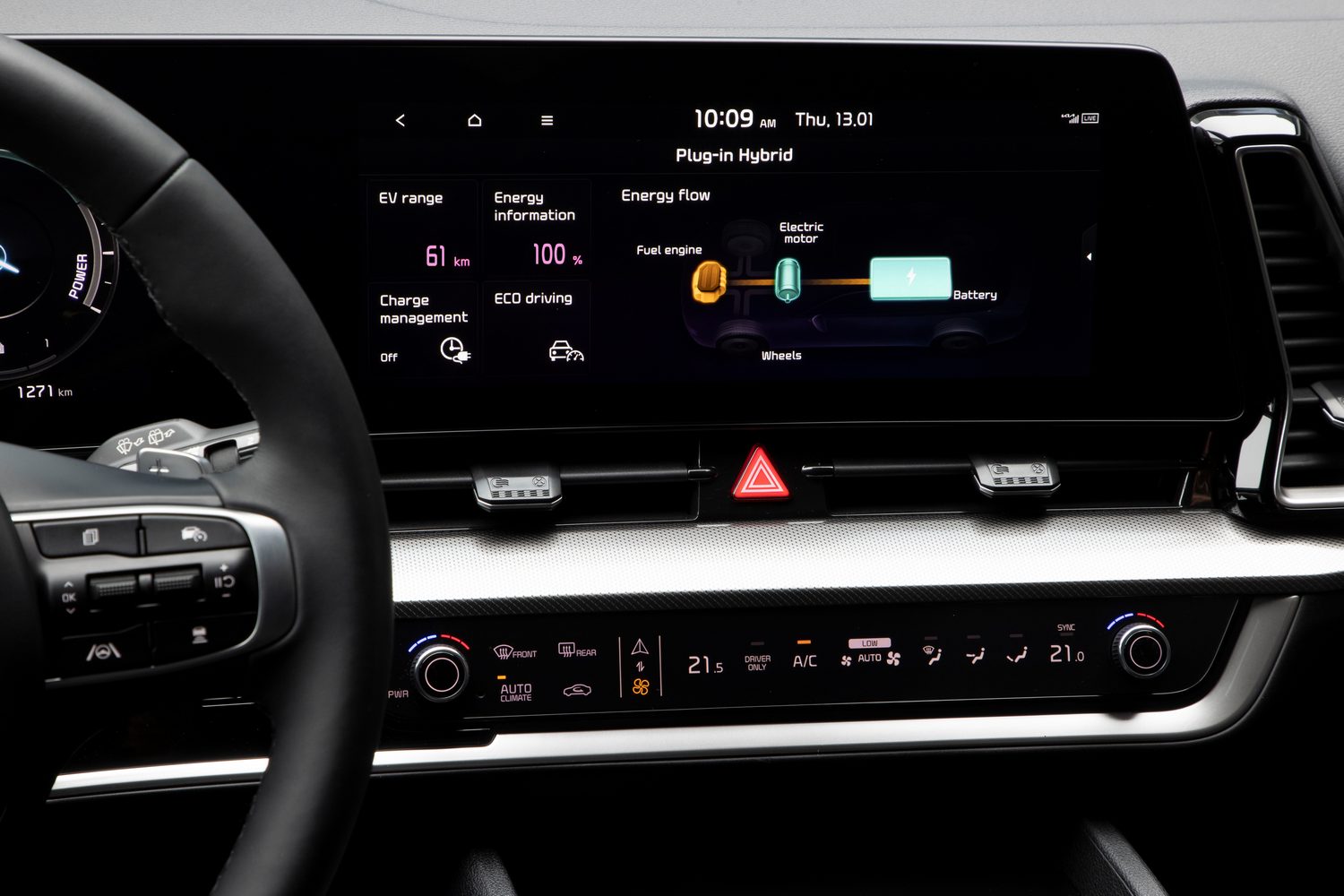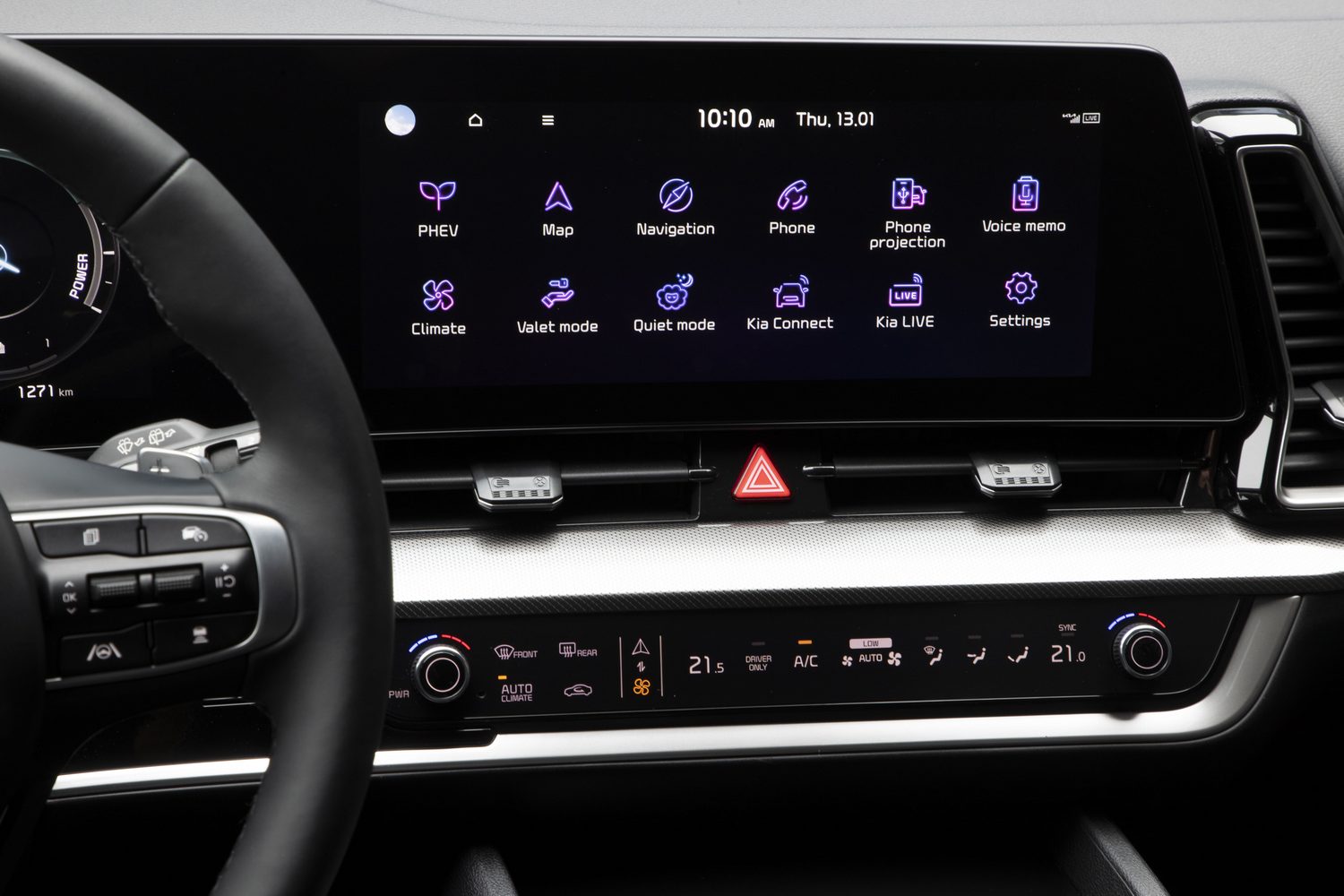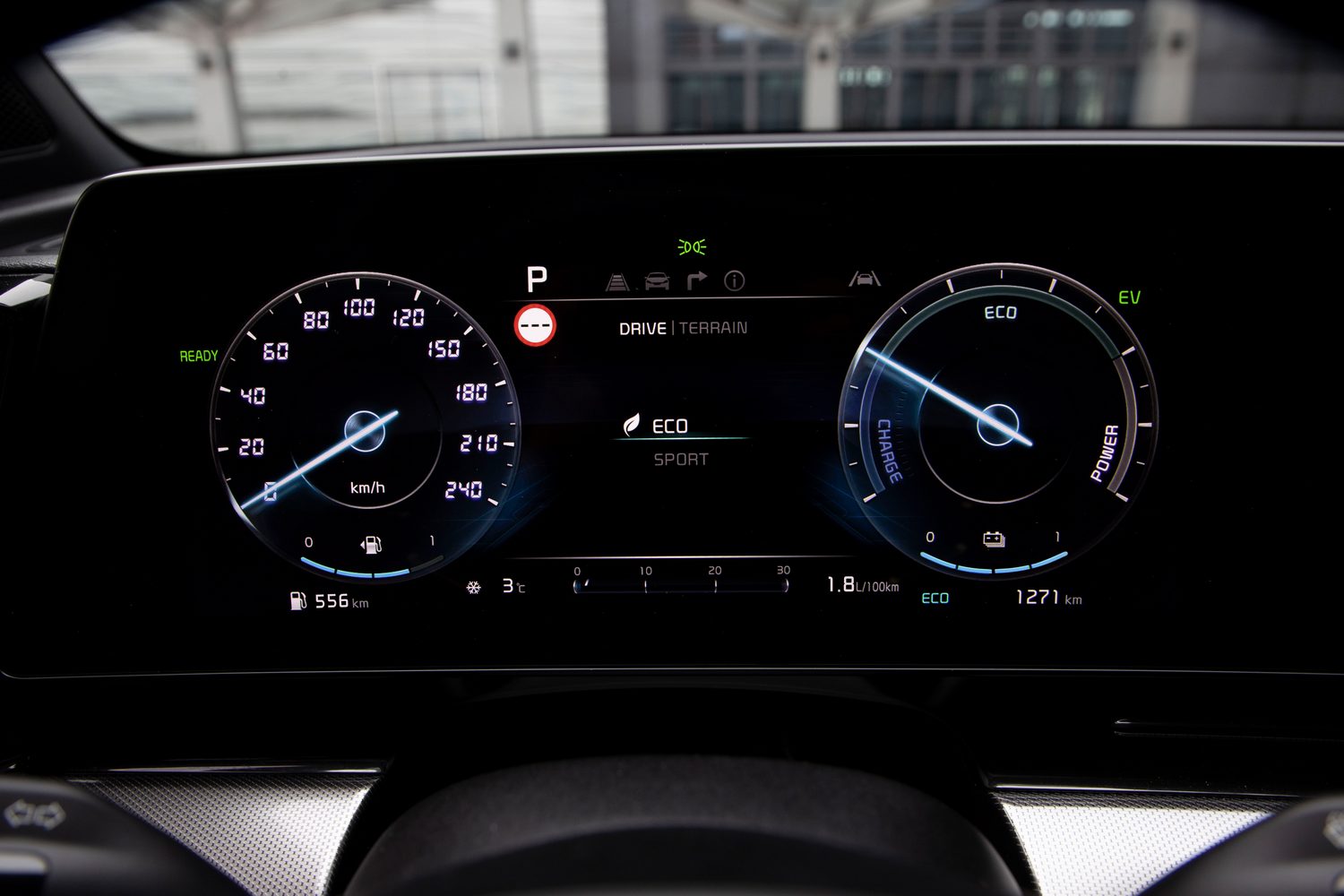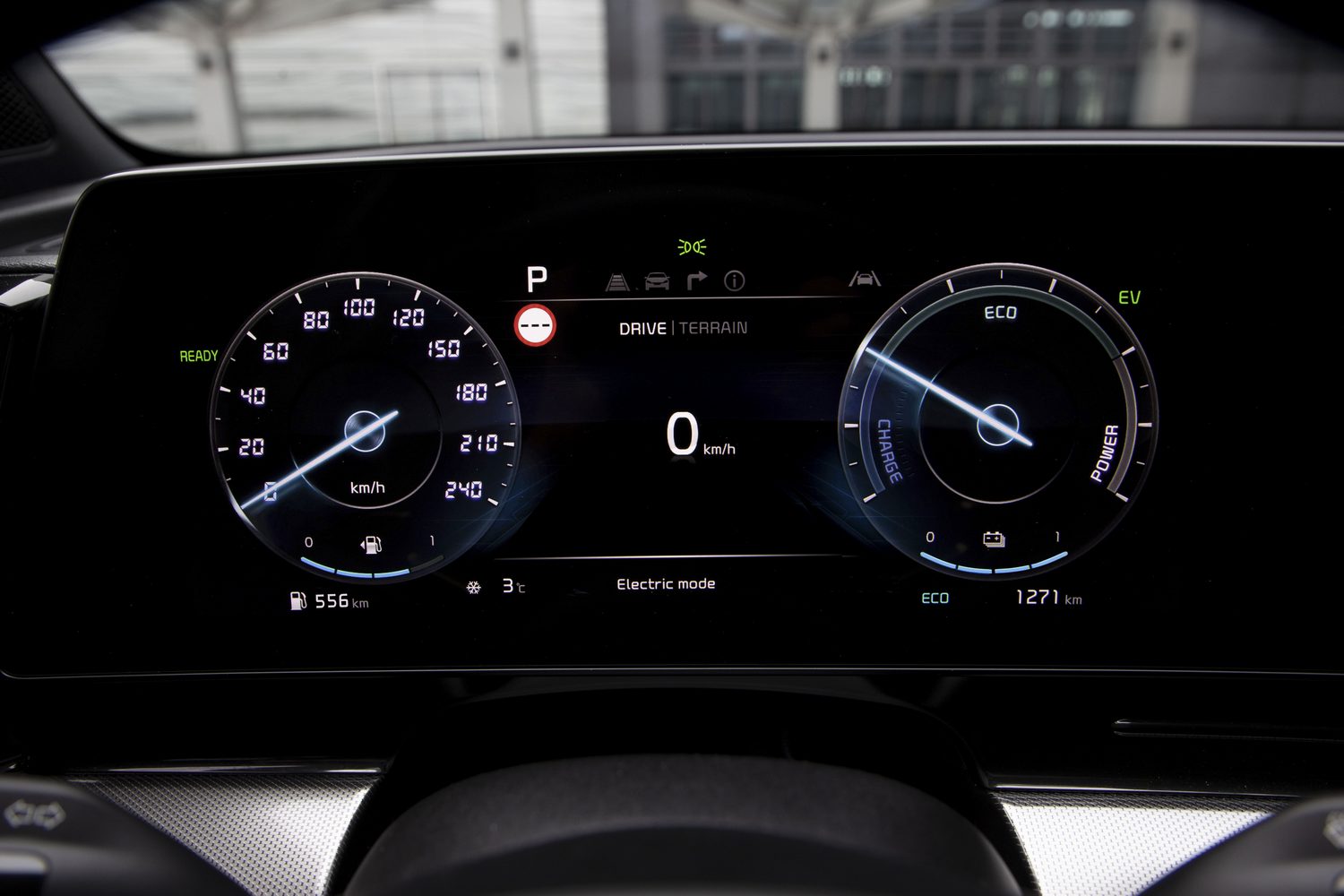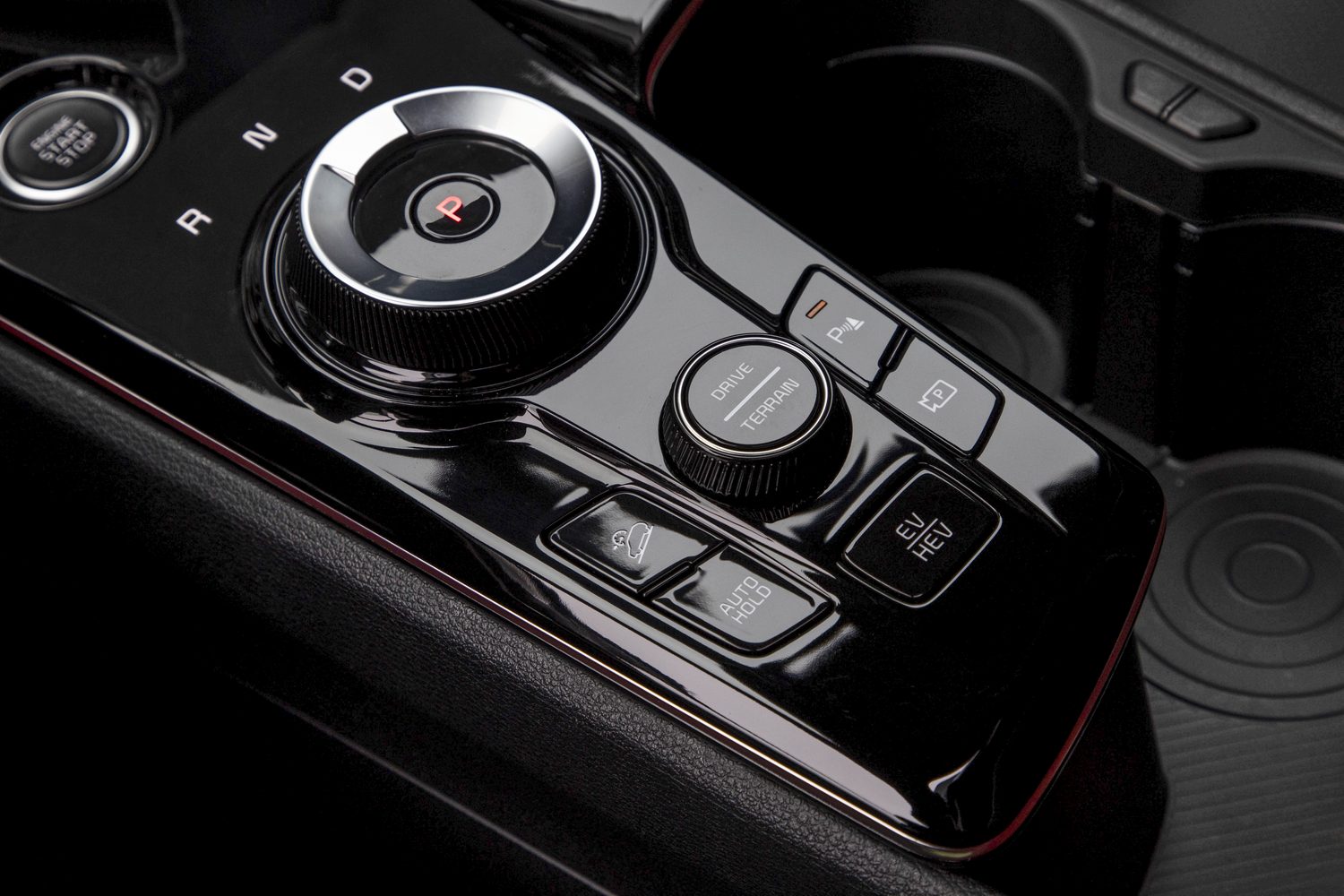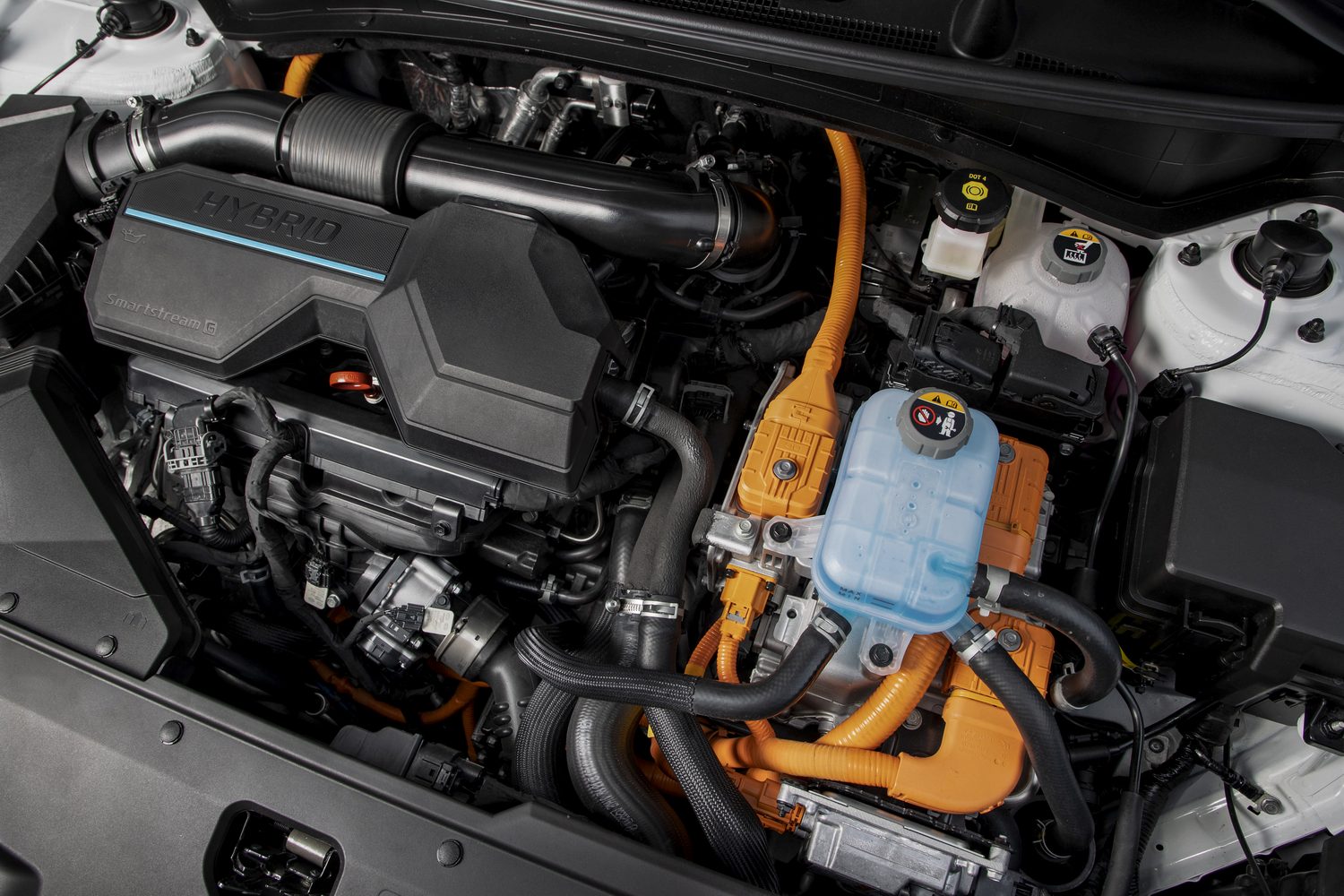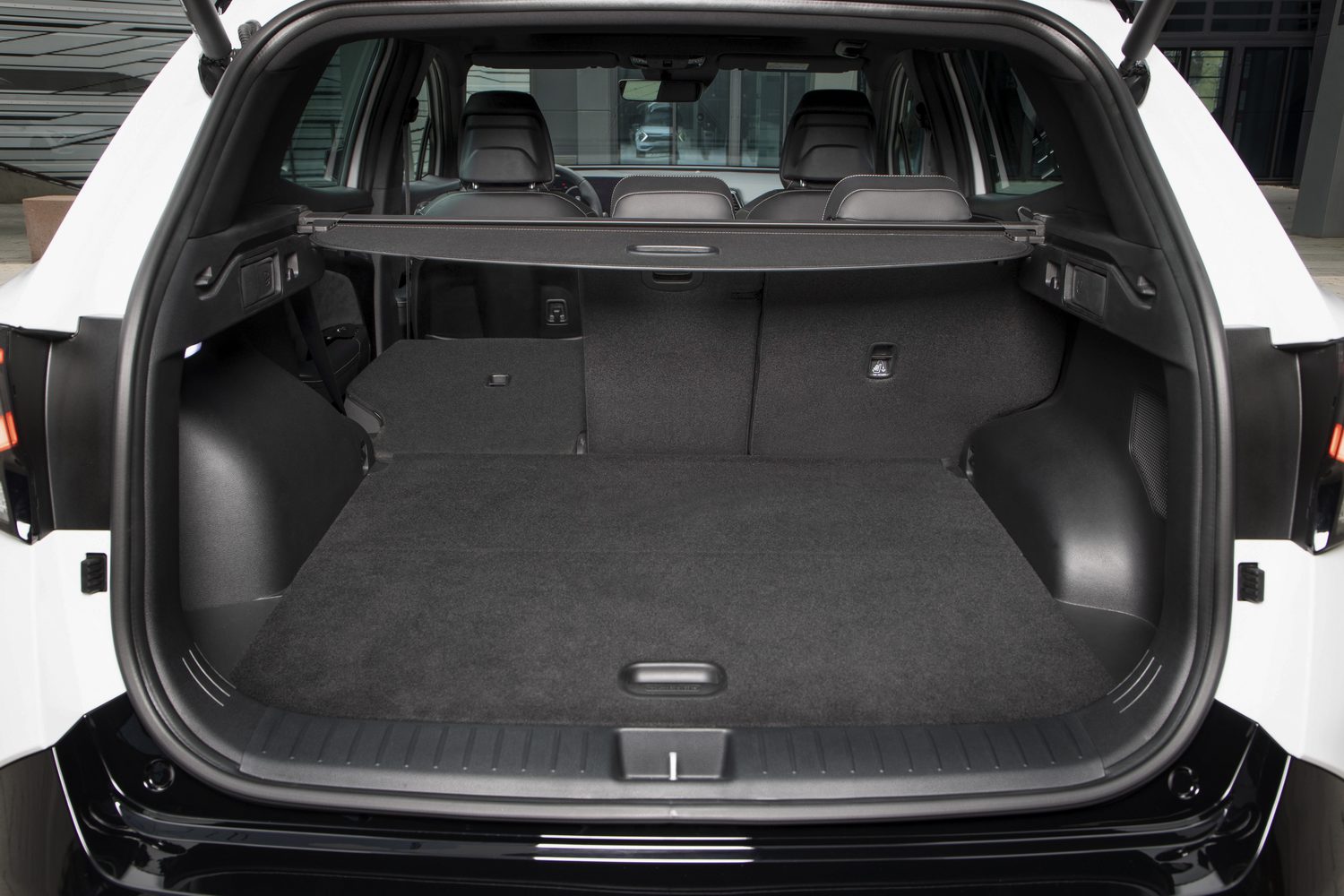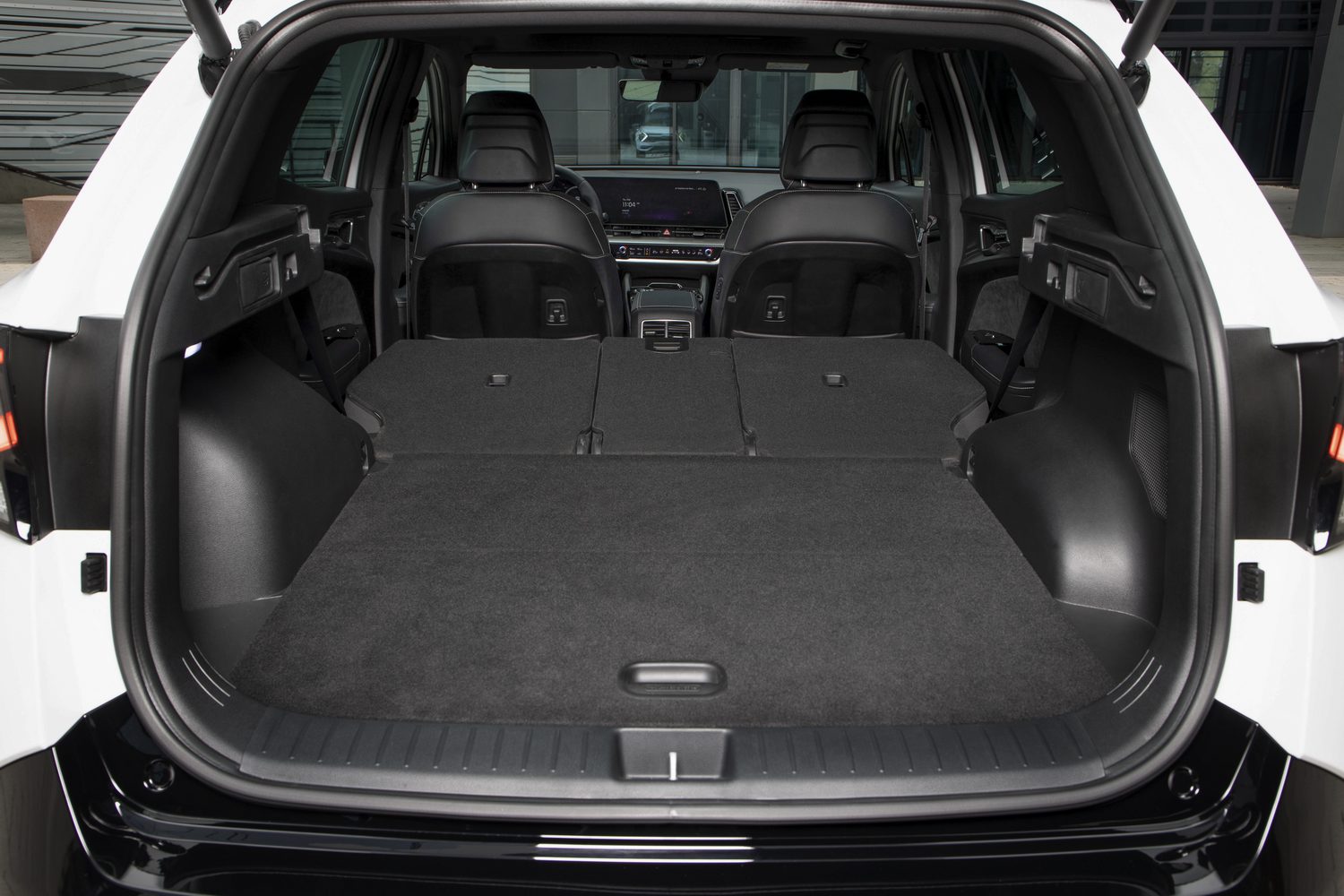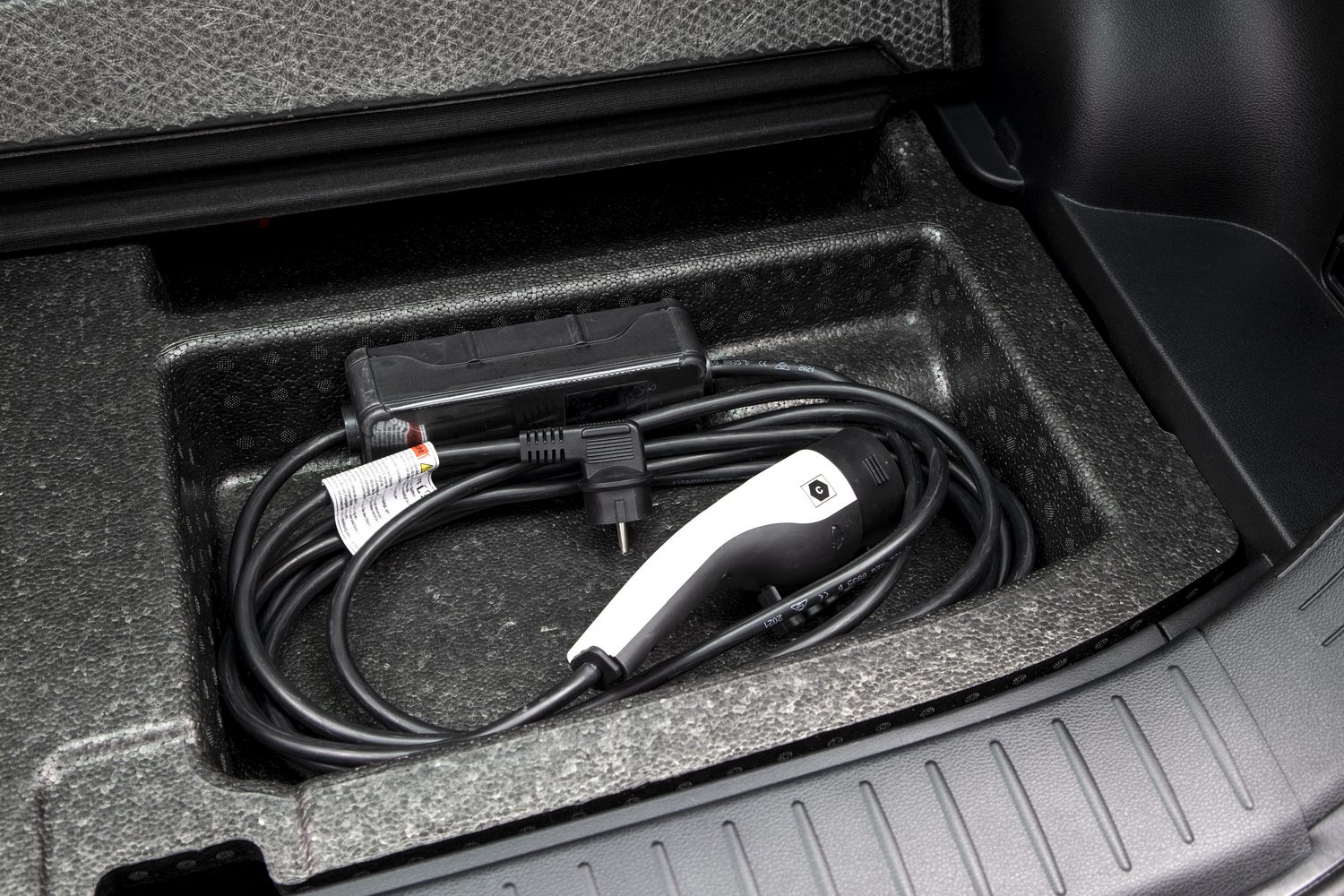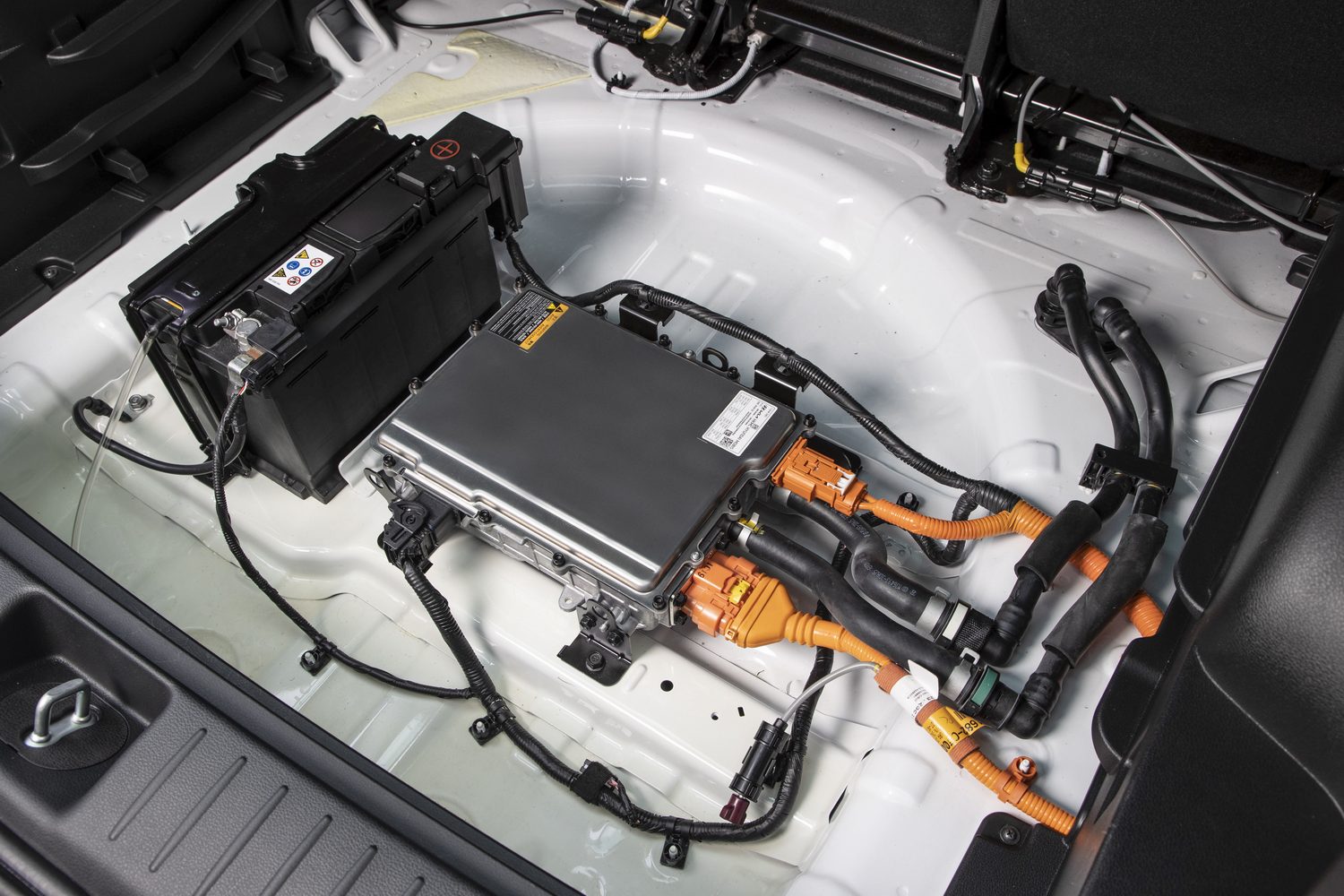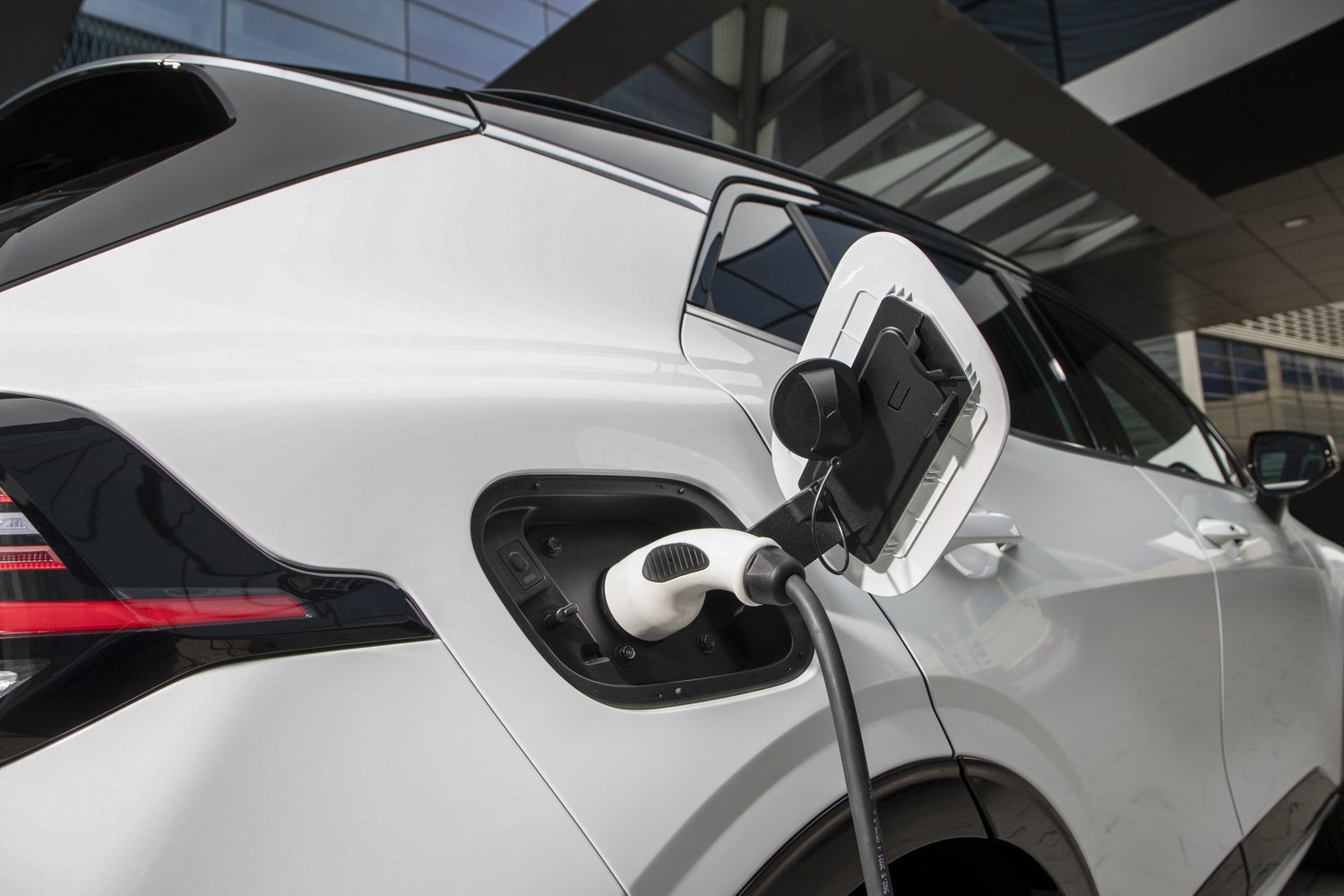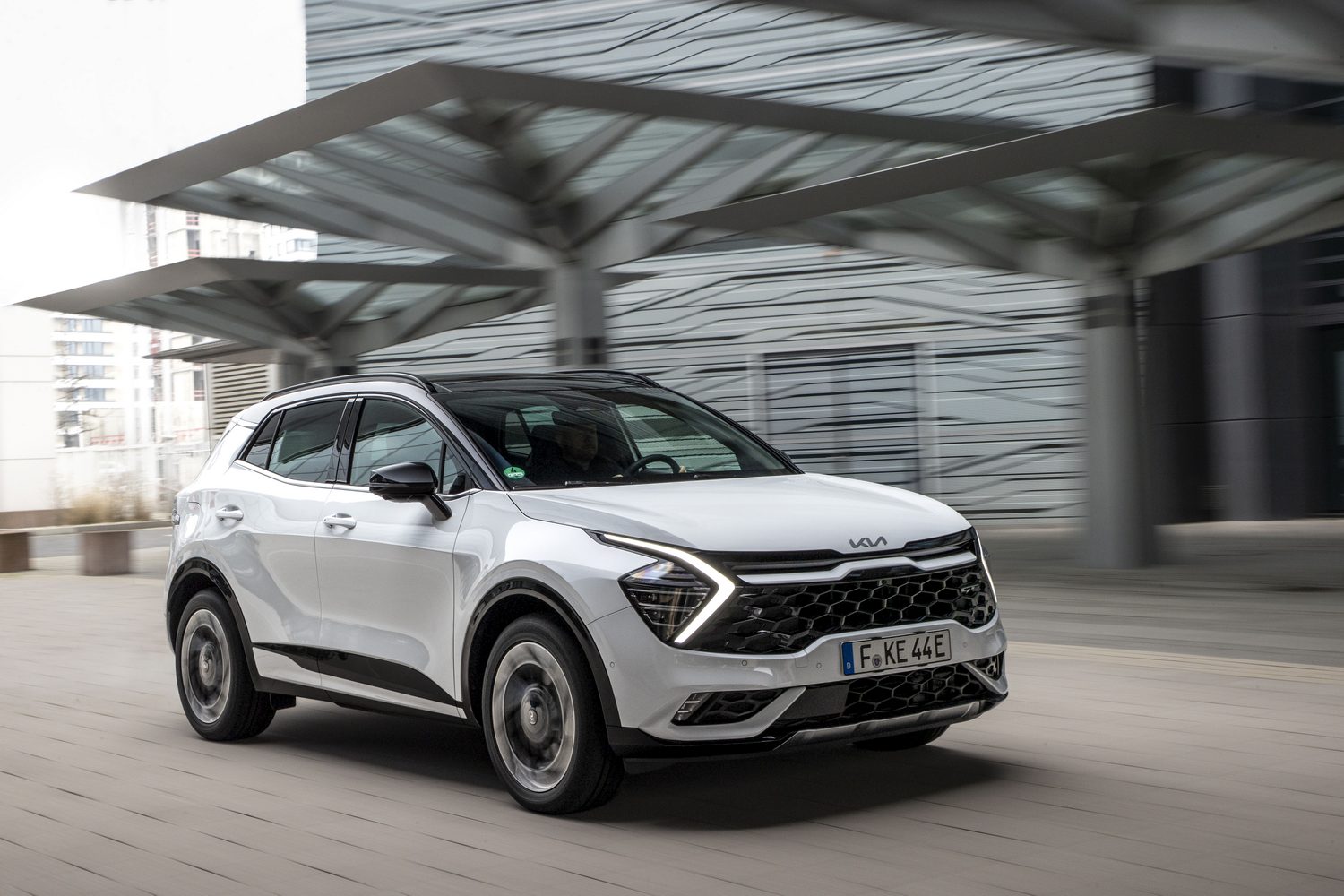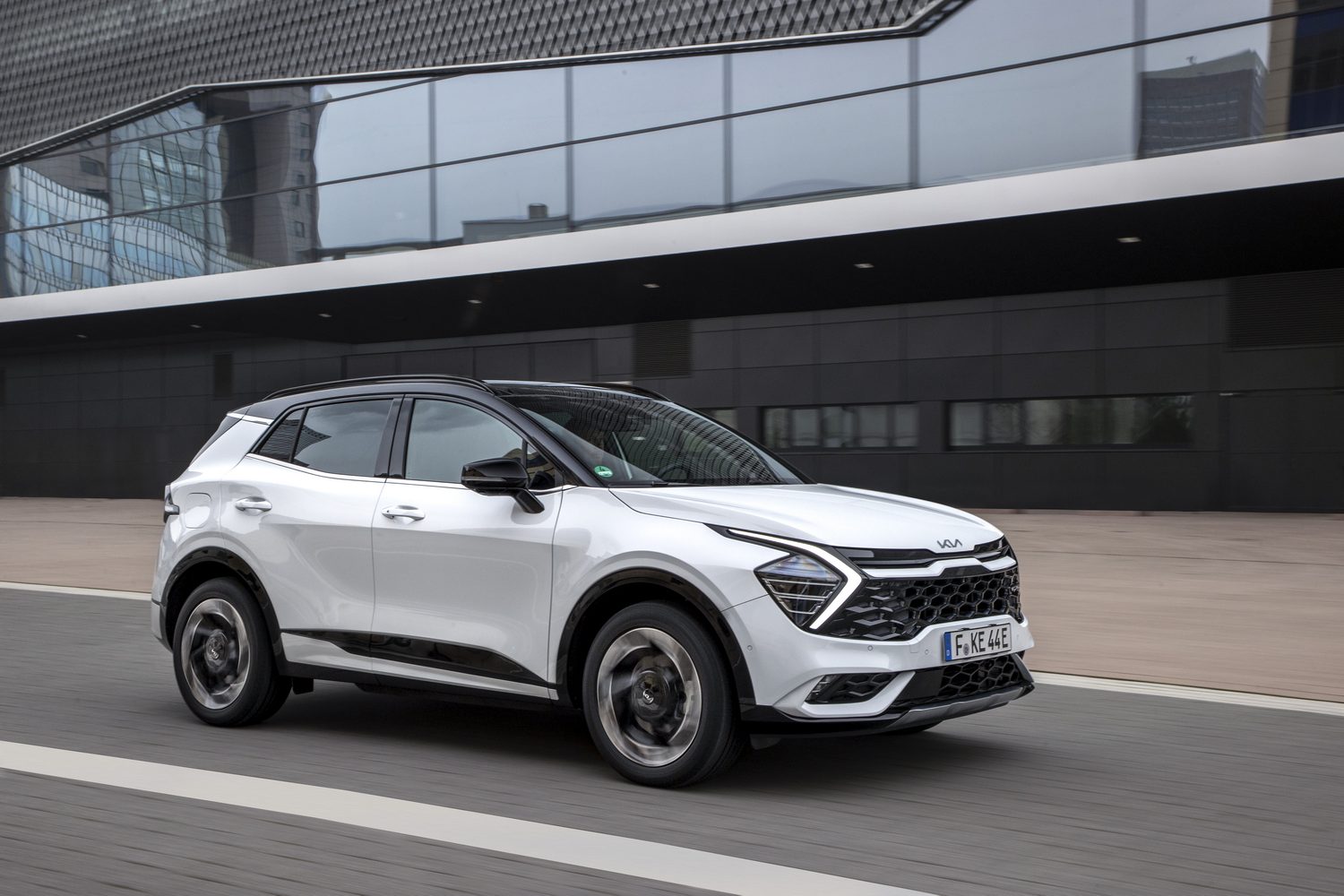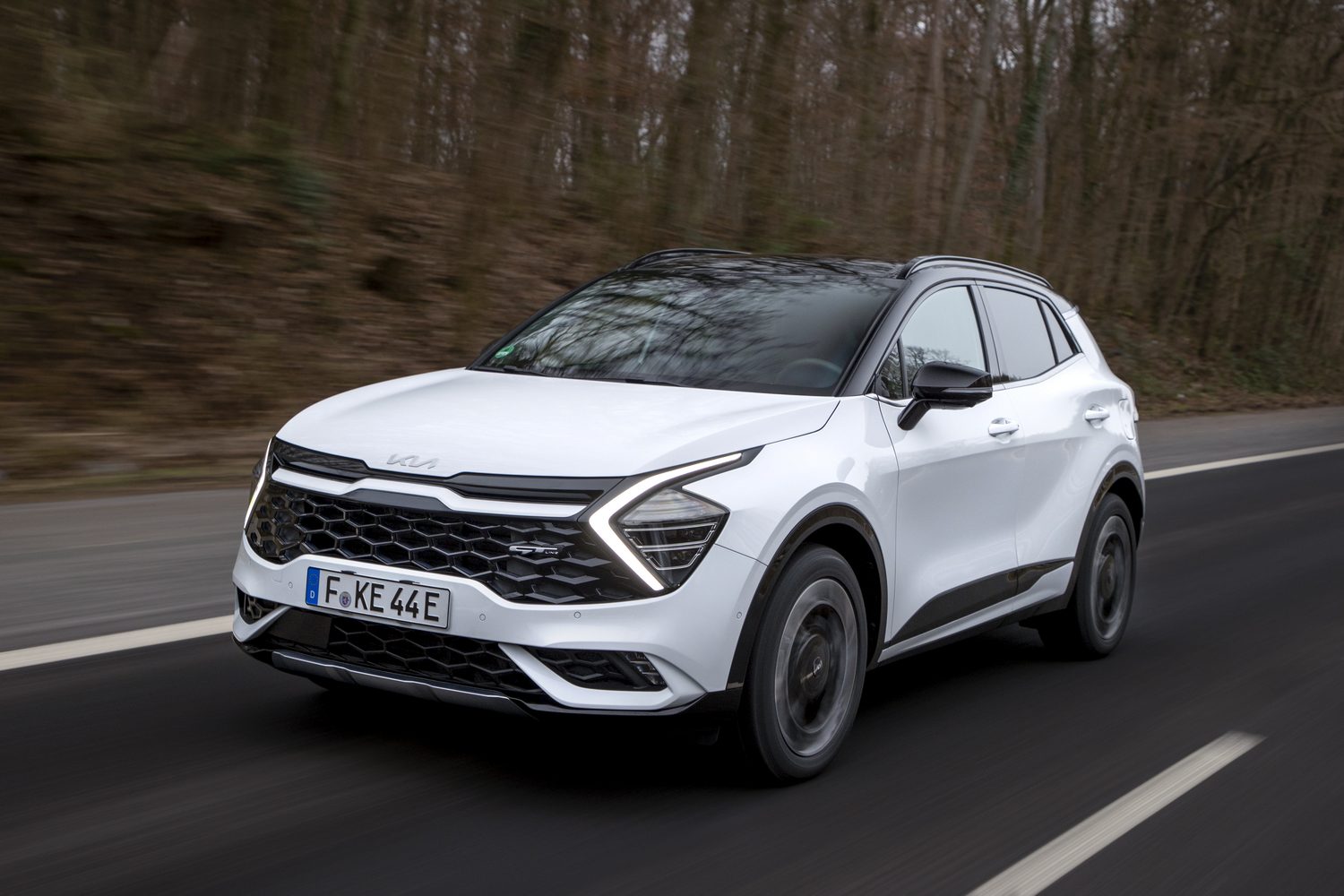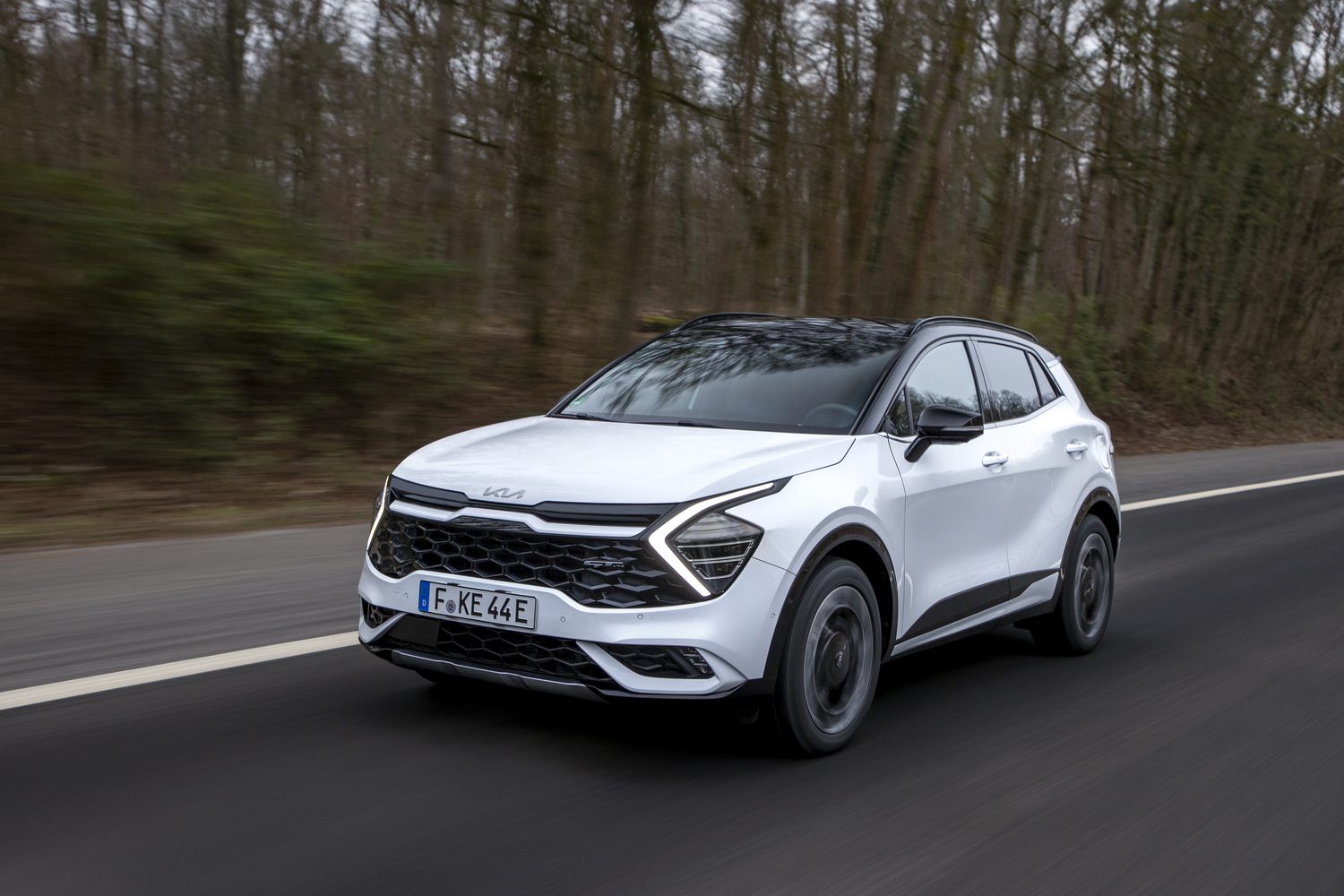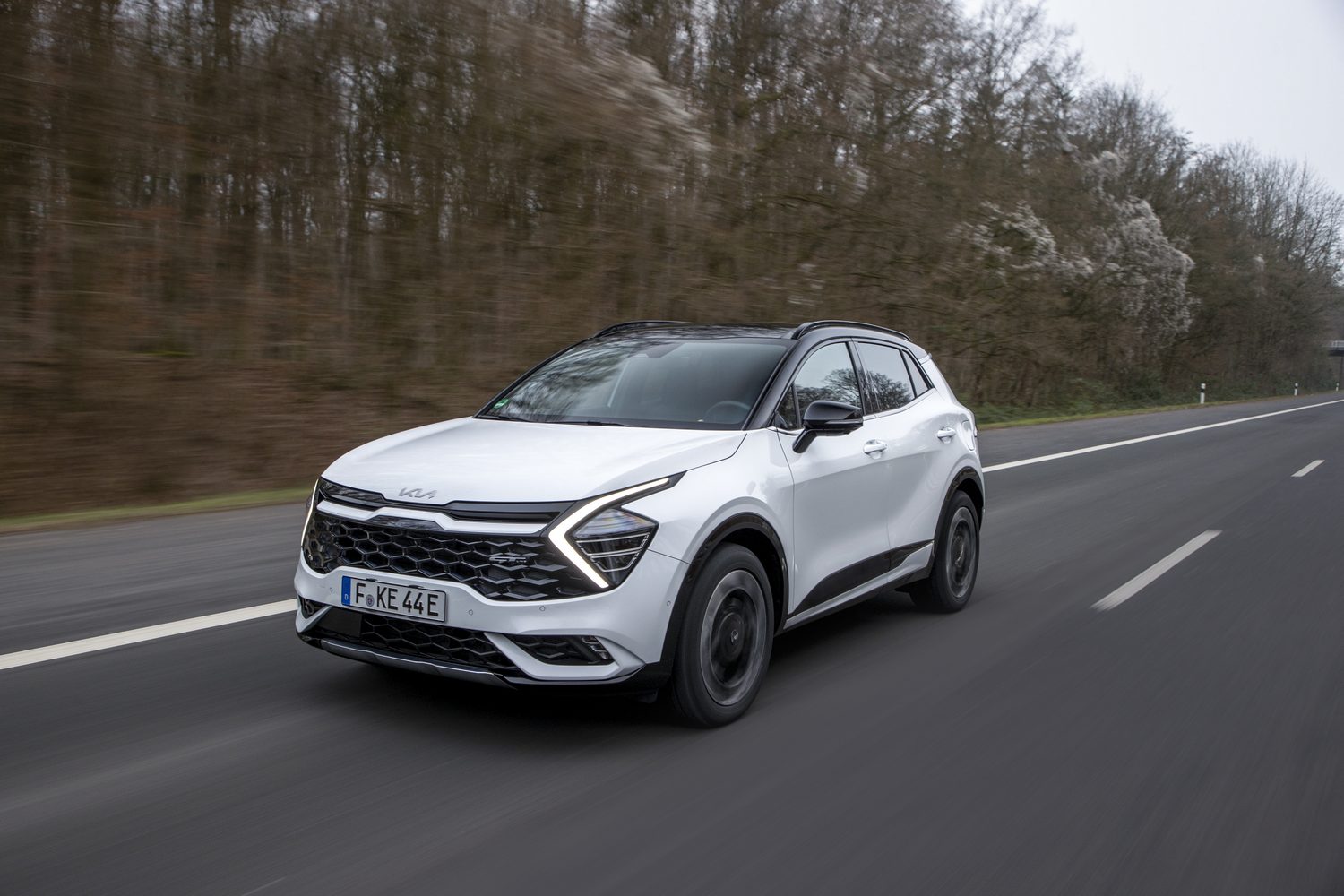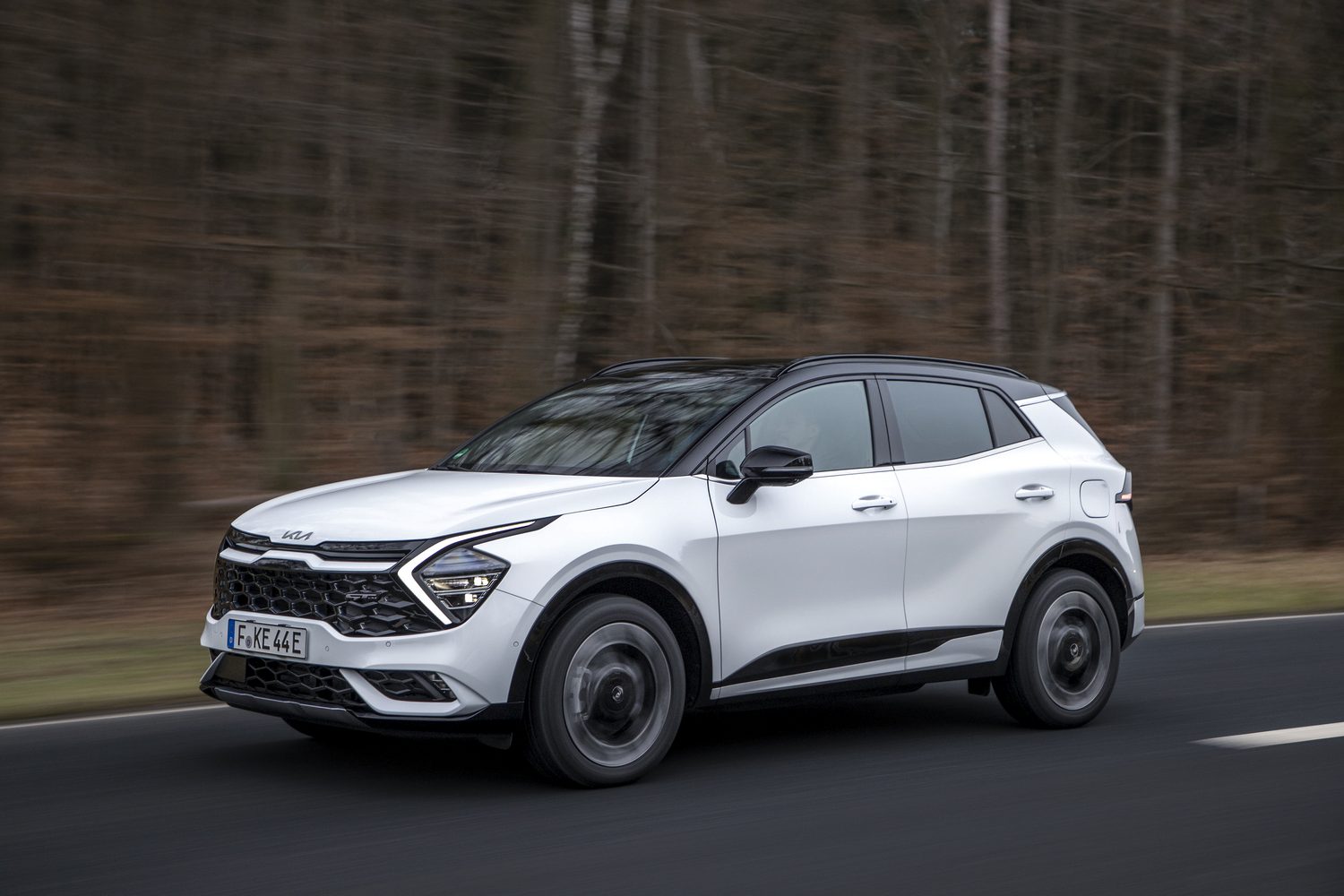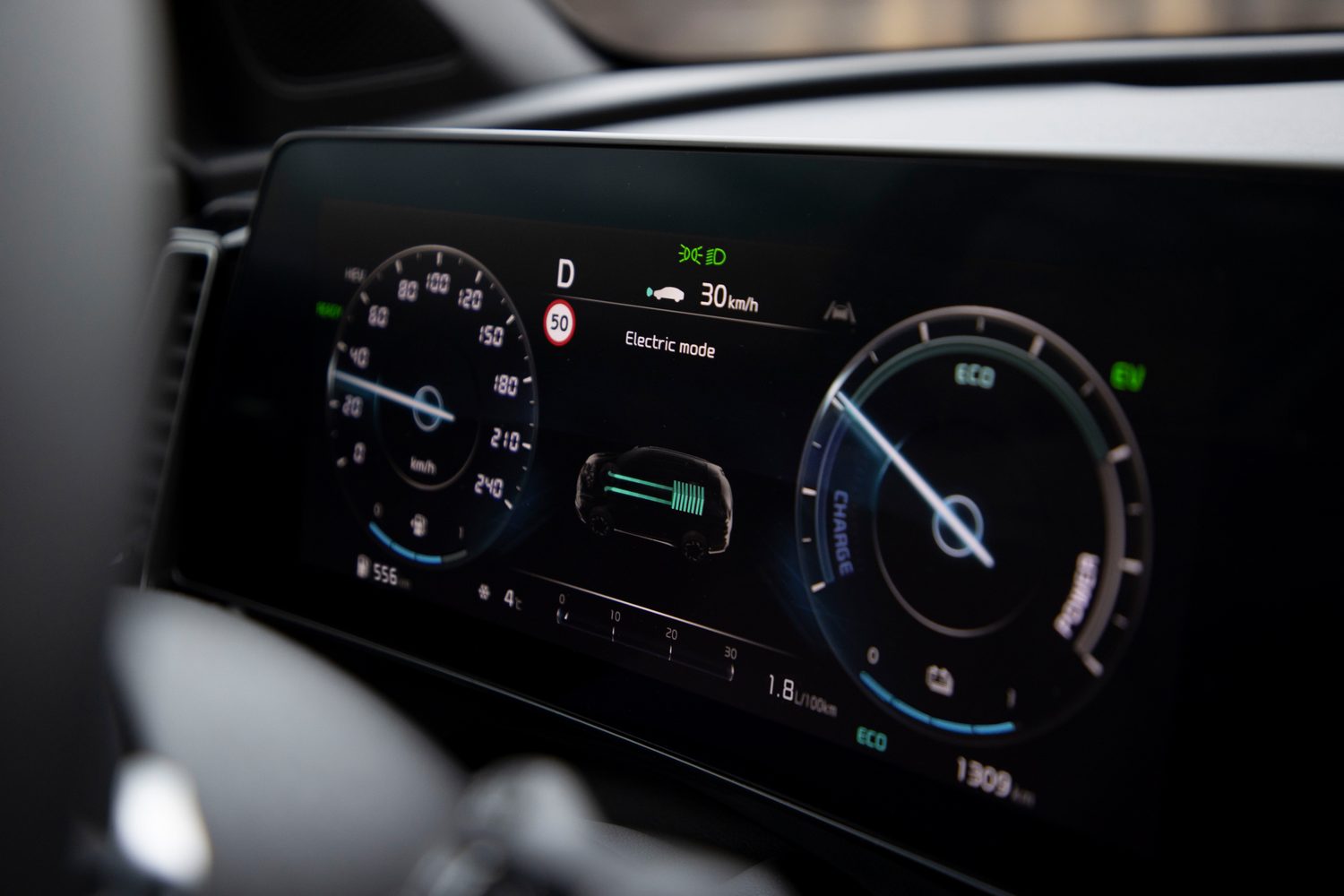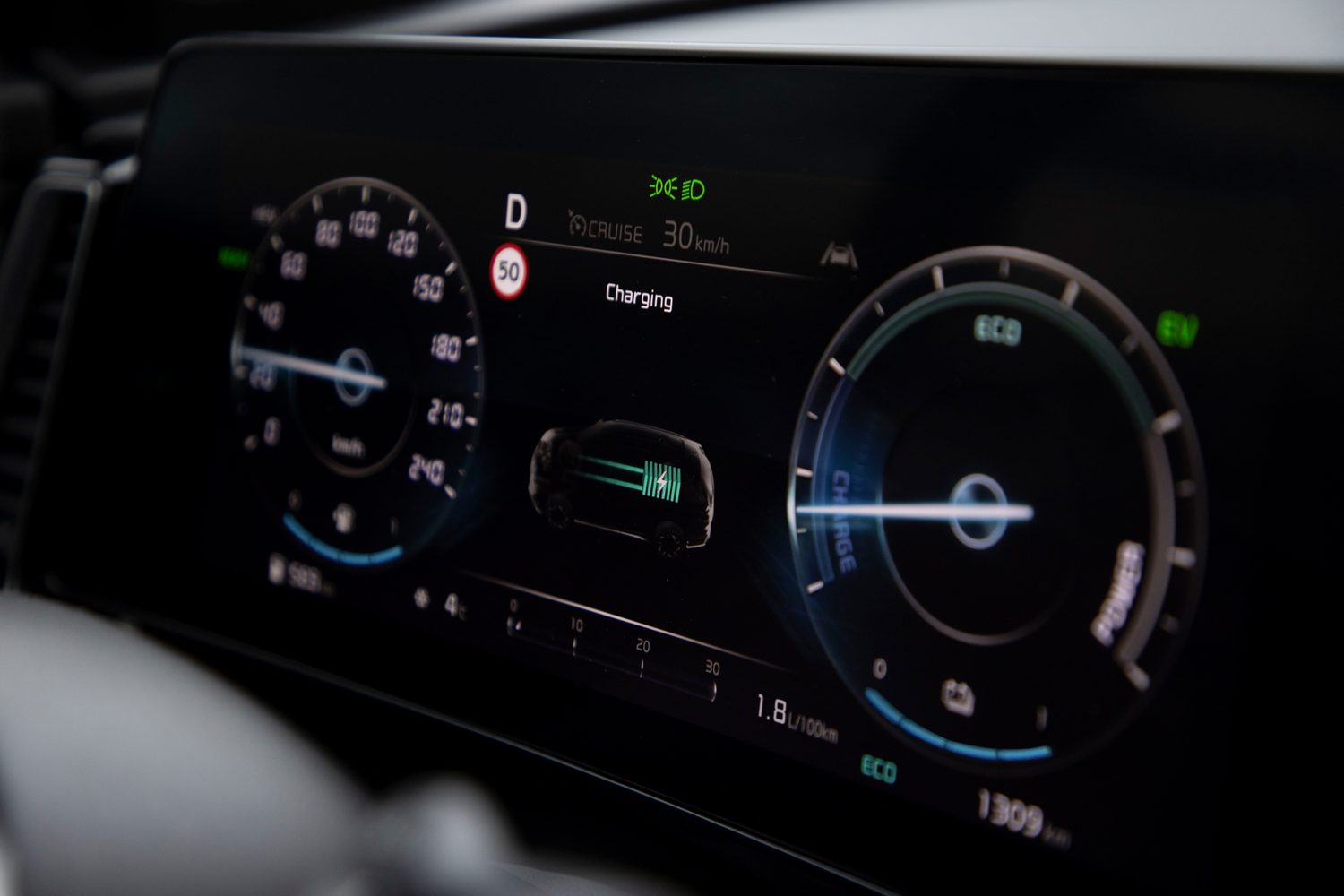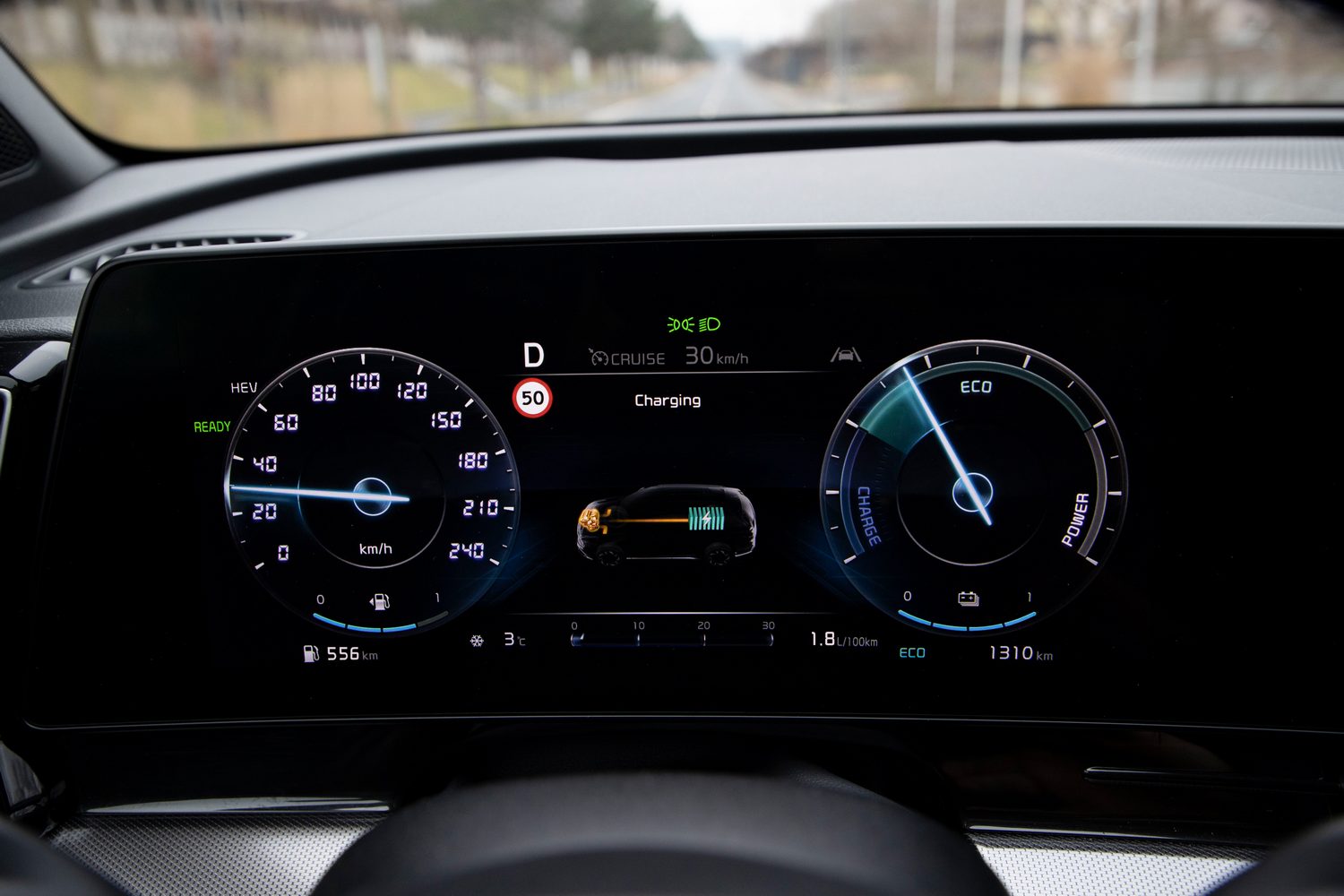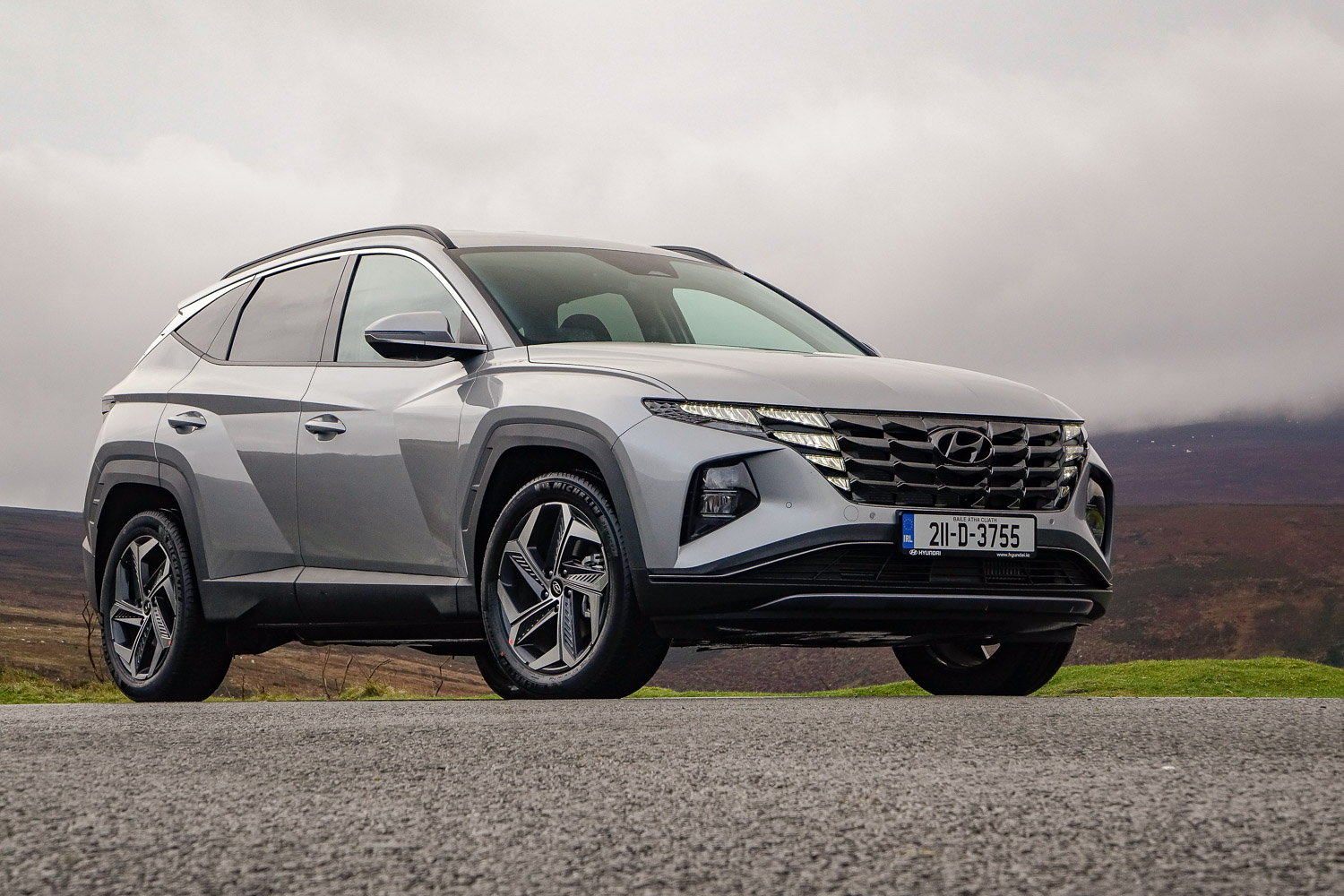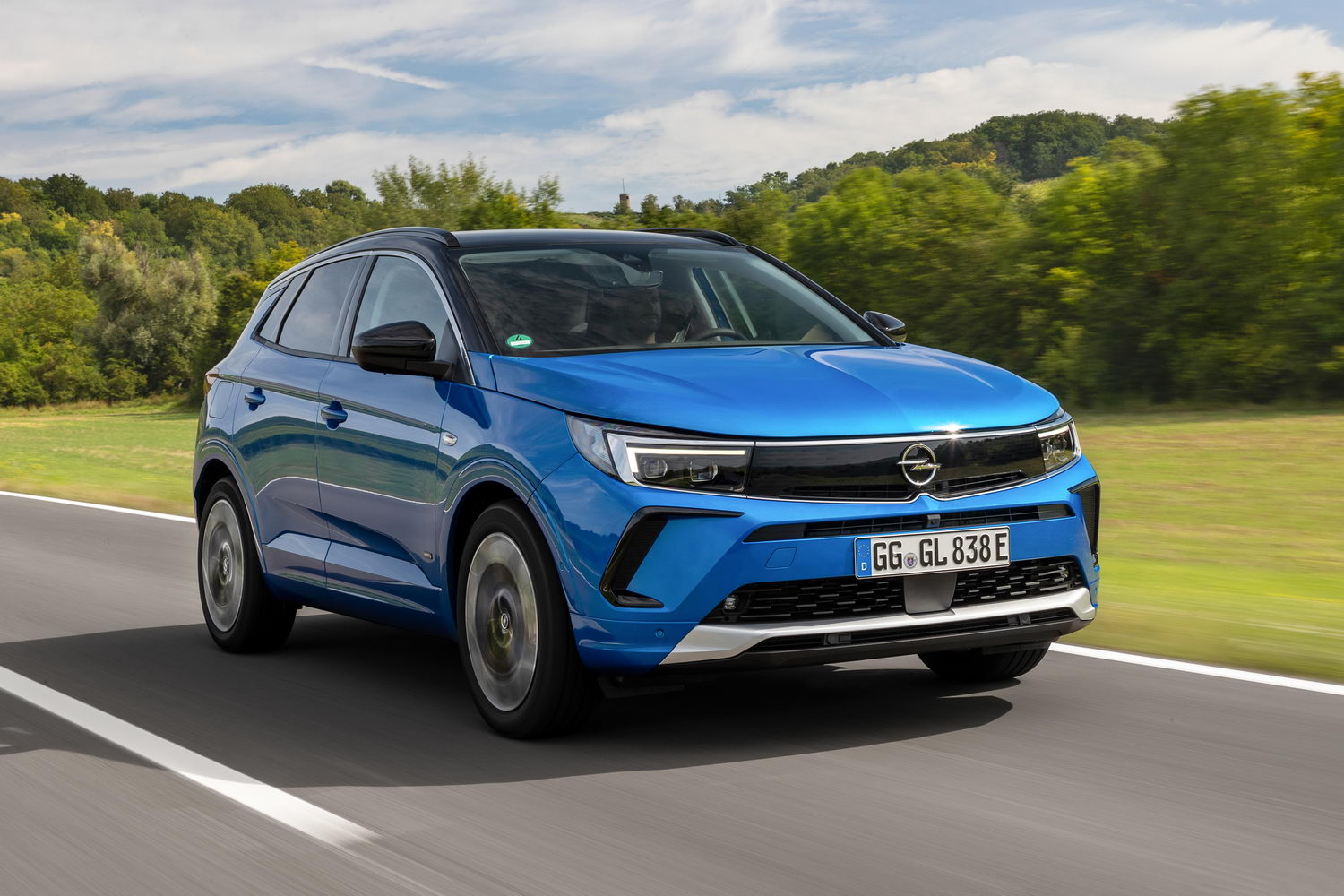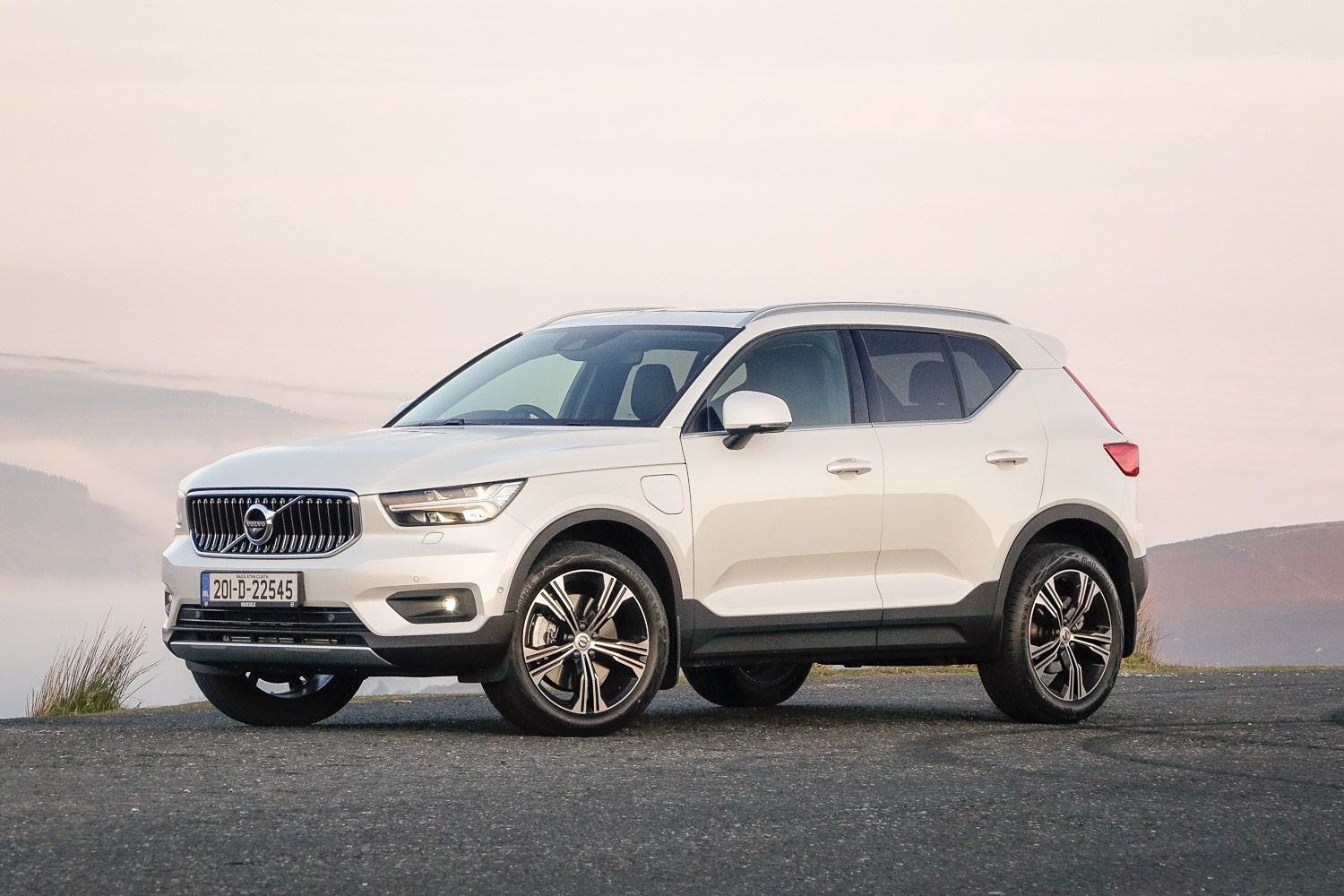The Kia Sportage has long been one of those efficient SUVs that performs well and ticks a lot of boxes, but never really stirs much emotion. For all its futuristic design features, the latest-generation Sportage is really cut from the same cloth, but can the addition of a powerful and efficient plug-in hybrid powertrain add some excitement to the Kia recipe?
In the metal
To all but the biggest Kia nerds, the plug-in hybrid Sportage is the spitting image of the petrol- or diesel-powered cars you've already seen. In fact, if you taped over the badge on the tailgate, you'll be hard pressed to find anyone who can determine a regular hybrid Sportage from its plug-in sibling without clambering inside.
So, for those who want to impress or, more likely, concern their friends with their knowledge, here's a quick guide. There are two fuel filler flaps: one for electricity and one on the other side for petrol. Yep, that's it. Aside from the obligatory 'PHEV' badge on the back, that's the only thing that's even vaguely apparent.
Not that we're complaining very much. To some, the Sportage's looks will be a little challenging, but perhaps to avoid being outdone by sibling company Hyundai's futuristic new Tucson, Kia has clearly chosen to give its family SUV a distinctive and modern design. So, while it won't be to everyone's taste, at least it looks different and up-to-date, which already puts it ahead of its slightly awkward predecessor.
The interior has had a similarly comprehensive overhaul, and like the exterior it takes some inspiration from the Kia EV6 electric hatchback. The cabin is dominated by the two digital displays that account for the right-hand two-thirds of the dashboard and provide a digital instrument display, as well as a touchscreen infotainment system. As is so often the way with Kia, these displays might not be at the forefront when it comes to style and design, but they're more functional than most.
Not only does the touchscreen react quickly to inputs, but the menus are mostly logical, and buttons are more or less where you expect them to be. And although it might not look as snazzy as some of the displays in contemporary rivals, there's a lot to be said for an infotainment system that simply works properly.
Elsewhere, modern features include a rotary gear selector that feels a little bit cheap but works passably, and that's a bit of a metaphor for the whole cabin. Everything works well and most of the switchgear is pleasantly solid, but some sub-standard materials feel a bit disappointing - especially when the old Sportage was so solid.
At least it's roomy, with ample space for those in the front and enough room for adults in the back. Seating five might not be much fun for whoever is unlucky enough to occupy the centre seat, but four will be perfectly comfortable on journeys of any length.
The plug-in Sportage has, however, sacrificed some luggage space in the pursuit of fuel efficiency. With batteries stowed low down in the car, the boot measures 540 litres, rather than the 591 litres you get from less electrified models. That 50-litre loss is hardly the end of the world, and a 540-litre space is perfectly respectable, but those who need the capacity will have to think about choosing a powertrain that suits.
Driving it
The Sportage's plug-in hybrid powertrain comprises a 1.6-litre petrol engine and a 91hp electric motor, as well as a 13.8kWh lithium-ion battery. Paired with a six-speed automatic gearbox, the system delivers a maximum of 265hp to all four wheels, making this the most powerful option in the Sportage range.
A 0-100km/h time of 7.9 seconds is respectable, and the Sportage certainly doesn't want for performance on the road. It never feels especially fast, but it's no slouch, and that's more than adequate in what is still a fairly conventional family SUV.
As such, the Sportage PHEV is more about economy and ecology than performance. The official economy test suggests it'll burn just 1.12 litres of petrol every 100km, but that seems a little fanciful for most customers. Similarly, the battery is supposedly capable of powering the car for up to 69km without the assistance of the petrol engine, but that too seems a little optimistic. That said, we managed more than 50km on a mixture of roads without trying awfully hard, so switching off unnecessary ancillaries and driving with a lighter touch might get you up to 60km or so.
If you can achieve that, you can charge the car regularly and you mostly stick to sub-60km journeys, you may see something in the region of 1.1 litres/100km, but that clearly requires a specific lifestyle. Nevertheless, the fact remains that using a plug-in hybrid Sportage could save you plenty of petrol money if you use it in the right way. For those who mostly do school runs, short commutes and trips to the shops, punctuated only by the occasional longer jaunt, it'll do the job very nicely indeed.
That's partly because the Sportage PHEV is so refined. Naturally, the electric motor produces little in the way of noise, but road rumble is well damped, too. Wind noise is a bit of an issue at speed, with a sort of whistle from around the door mirrors, but you only really notice that because the powertrain is so quiet. Very often, you have to look for the little EV symbol in the instrument cluster to work out whether it's running on petrol or electricity. Of course, it has its moments where the four-cylinder petrol engine is louder - particularly if you put your foot down - but 99 per cent of the time it's hushed and unobtrusive.
Aside from that, driving the plug-in Sportage is much like driving any other Sportage. It flounders a little on some surfaces as the extra weight of the battery pack drags it down, but the ride is more or less identical most of the time. The suspension isn't brilliant, getting caught out by the occasional bump, but it's perfectly tolerable. A Skoda Karoq is still more comfortable, though.
And the Karoq is more fun to drive. The Kia has overly light steering that unsettles the nerves slightly when you're pushing on a bit, but it generally feels safe and stable, rather than offering any sort of agility. And the advantage of sitting all those batteries under the floor is that it doesn't lean quite as much as its siblings when it goes around a corner, adding to that sense of security. Overall, it's uninspiring, but it does the job.
What you get for your money
Kia Ireland is yet to announce prices for the new Sportage Plug-In Hybrid, but we'll update this page when more details become available. We expect the range to broadly follow the existing Sportage line-up, which comprises K2, K3, K4 and sporty-looking GT-Line models, although we suspect Kia may only launch the PHEV in the more luxurious trim levels.
Summary
In many ways, the plug-in version of the Sportage is the most appealing choice. Not only will it be the most tax-efficient option, but it also offers more refinement and power than any of its siblings, as well as a handy real-world electric range of 50km and all-wheel drive. Of course, all the usual plug-in hybrid caveats apply, and only those with a particular set of circumstances will be able to make the most of the Kia, but for those with the right lifestyle, the Sportage is worthy of a place on your shortlist.

